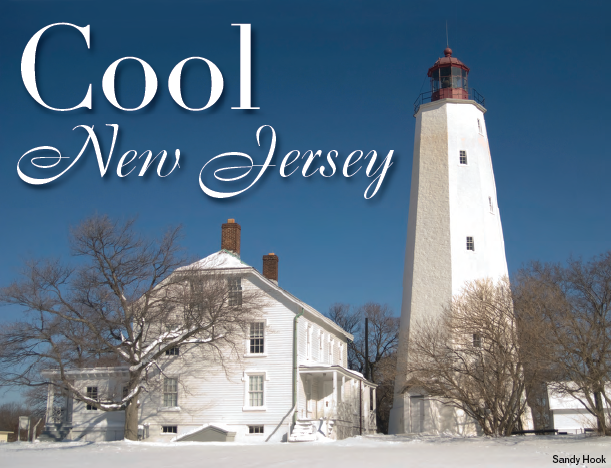More remarkable stuff has happened here per square mile than in any other state in the nation. These are the cold, hard facts.
Where would the planet be without New Jersey? Resist, if you can, the urge to crack wise and consider seriously for a moment the gravity of this question. Yes, we have given the world an occasional glimpse of our seamier underside. A submerged mobster may resurface from time to time in the Hackensack River. Occasionally a few civic leaders might get mixed up in some organ theft. And, okay, far too many of our youth are comfortable using the word “allegedly.” However, these are all mere jug handles on the road to greatness that our state has traveled. In these pages, EDGE celebrates the remarkable people, places and things that make New Jersey the hottest thing going.
SINGERS
New Jersey’s coolest “crooners”…
1. Frank Sinatra (Hoboken) Never recorded Newark, Newark. Why?
2. Dionne Warwick (East Orange) Her collaboration with Burt Bacharach made music history.
3. Paul Robeson (Princeton) Magnificent bass-baritone and stage actor, his three-year run as Othello in the 1940s still holds the Broadway record for any Shakespeare play.
4. Frankie Valli (Newark) Just too good to be true. He made Jersey Boys as famous as Jersey Girls.
5. Connie Francis (Newark) Where the Boys Are star grew up in the Ironbound neighborhood. Honorable Mention: Donald Fagen (Passaic) Depends on whether or not you like Steely Dan.
SWINGERS
New Jersey’s coolest jazz artists…

1. Count Basie (Red Bank) Led his own groundbreaking band for 50 years.
2. Sarah Vaughn (Newark) Her PBS performance with the NJ Symphony in 1980 ranks among the greatest TV moments in jazz history.
3. Dizzy Gillespie (Englewood) Those cheeks…spectacular!
4. Jimmy Johnson (New Brunswick) Gifted pianist helped transform Ragtime into early jazz.
5. Wayne Shorter (Newark) Saxophone virtuoso was a Newark Arts High School grad.
Honorable Mention: George Benson (Englewood Cliffs) Legendary jazz guitarist is a long-time Bergen County resident.
BLINGERS
New Jersey’s coolest rap and hip-hop stars…
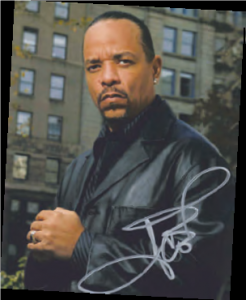
1. Queen Latifah (Newark) Just celebrated her 20th year in the biz.
2. Lauryn Hill (South Orange) She and Zach Braff were friends and classmates at Columbia High in Maplewood.
3. Ice T (Newark) From Gansta Rap pioneer to TV cop on Law & Order SVU. Only in America.
4. Poor Righteous Teachers (Trenton) Who could forget this socially conscious hip-hop trio’s haunting single, Butt Naked Booty Bless?
5. Faith Evans (Newark) Wife of the late Notorious B.I.G. has three platinum albums to her credit.
Honorable Mention: Naughty By Nature (East Orange) Renamed East Orange “Ill-town.” But you knew that already, didn’t you?
CA-CHINGERS
New Jersey’s coolest music superstars…
1. Bruce Springsteen (Freehold) The Boss. Top of the list. Period.
2. Whitney Houston (East Orange) First wowed the world as a teen soloist at the New Hope Baptist Church in Newark.
3. Jon Bon Jovi (Sayreville) The hits keep coming.
4. Southside Johnny (Ocean Grove) The hippest thing ever to come out of Ocean Grove.
5. Les Paul and Mary Ford (Mahwah) Their Bergen County home studio turned out a bunch of #1 hits in the early ’50s.
Honorable Mention: Paul Simon (Newark) Moved to Queens when he was a baby, so not a “real” New Jerseyan. No truth to the rumor that Bridge Over Troubled Waters was actually the Goethals Bridge.
STAR FACES
New Jersey’s coolest acting talent…
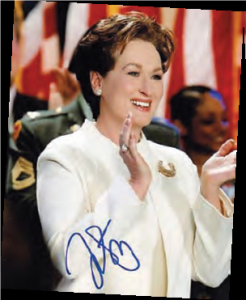
1. Meryl Streep (Summit) A Bernards High School grad!
2. Jack Nicholson (Neptune City) You make me want to be a better man.
3. Ed Harris (Tenafly) Captain of the Tenafly High football team.
4. Tom Cruise (Glen Ridge) Cut from the Glen Ridge High football team.
5. Bruce Willis (Penns Grove) We forgive you for Hudson Hawk. Actually, no we don’t.
Honorable Mention: Frank Langella (Bayonne) He brought Dracula to life on Broadway.
SCARFACES
New Jersey’s coolest mobbed-up television and movie stars…
1. James Gandolfini (Westwood) Raised in Park Ridge,
graduated from Rutgers— a bona fide Jersey Boy.
2. Ray Liotta (Union) You’re a pistol, you’re really funny.
3. Joe Pesci (Newark) I’m funny how? I mean funny like I’m a clown? I amuse you? I make you laugh? I’m here to amuse you? What do you mean funny? Funny how? How am I funny?
4. Steven Van Zandt (Middletown) A member of the E Street Band and The Sopranos… that’s a Jersey Double.
5. Joe Pantoliano (Hoboken) Joey Pants, yet another Sopranos alum.
Honorable Mention: Sterling Hayden (Upper Montclair) Film Noir heavy played the police captain gunned down by Michael Corleone in The Godfather.
WRITERS
New Jersey’s coolest authors and poets…
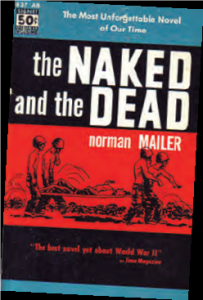
1. Allen Ginsberg (Paterson) The best of the Beat Generation poets.
2. Dorothy Parker (Long Branch) A leading light of the fabled Algonquin Roundtable.
3. Norman Mailer (Long Branch) The Naked and the Dead was on the best-seller list for 62 weeks.
4. Philip Roth (Newark) Several of his novels are set in Newark’s old Weequahic neighborhood.
5. William Carlos Williams (Rutherford) Haven’t read the epic poem Paterson? And you call yourself a New Jerseyan!
Honorable Mention: Walt Whitman (Camden) His New Jersey retirement cottage was the epicenter of American literary culture in the late 1880s.
DELIGHTERS
New Jersey’s coolest comic performers…
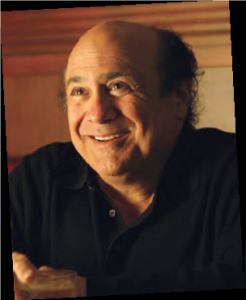
1. Jon Stewart (Lawrenceville) Reminds us each night that the news is an inexhaustible source of laughs.
2. Danny DeVito (Neptune) Grew up in Asbury Park, went to boarding school (Louie DePalma—a preppie?) in Summit.
3. Bud Abbott (Asbury Park) and Lou Costello (Paterson) Heyyyyy Aaaabbottttt!
4. Nathan Lane (Jersey City) Born Joe Lane, he changed his name to Nathan in honor of Nathan Detroit of Guys and Dolls.
5. Ernie Kovacs (Trenton) Only a guy from New Jersey could have come up with a three gorilla version of Swan Lake.
Honorable Mention: Jerry Lewis (Newark) Ranks higher on French lists.
FIGHTERS
New Jersey’s coolest pugilists…

1. Joe Walcott (Merchantville) Won the heavyweight crown at age 37. Anyone nicknamed Jersey Joe goes to the top of the list, right?
2. Marvin Hagler (Newark) Marvelous Marvin was undisputed champion for almost eight years.
3. James Braddock (North Bergen) Played by Russell Crowe on the screen, the Cinderella Man was born in New York but fought out of Hudson County.
4. Mickey Walker (Elizabeth) A beloved champion, the middleweight often beat heavier boxers.
5. Tony Galento (Orange) Two-Ton Tony once knocked down Joe Louis in a title fight. He also wrestled a bear and an octopus, and acted in Guys and Dolls and On the Waterfront.
Honorable Mention: Hurricane Carter

Photo credit: iStockphoto/Thinkstock
MOVERS
New Jersey’s coolest political figures…
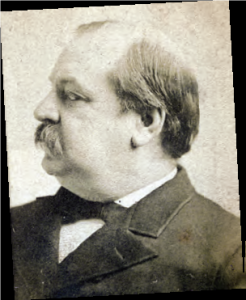
1. Grover Cleveland (Caldwell) Our 24th President, and the only one from the Garden State.
2. Aaron Burr (Newark) Killed Alexander Hamilton and tried to start his own county. Those nutty Princeton grads!
3. Frank Hague (Jersey City) For 30 years, no one in the state sneezed without his permission.
4. Thomas Kean (Hillside) 9/11 Commissioner set the bar high for NJ governors.
5. William Brennan (Newark) Progressive Supreme Court Justice was best known for his “absence of malice” stand.
Honorable Mention: Chris Christie (Newark) Um…we’re still waiting for that groundbreaking EDGE interview.
SHAKERS
New Jersey’s coolest cultural pioneers…
1. Alice Paul (Mt. Laurel) Took the fight for suffrage to unprecedented heights and won wo
men the right to vote in 1918.
2. Buzz Aldrin (Glen Ridge) His mom’s maiden name was—you guessed it—Moon.
3. Bull Halsey (Elizabeth) Guided the USS Enterprise through key battles in World War II.
4. James Marshall (Hopewell Twp.) The original Blingmeister—first to discover gold in California.
5. Alfred Kinsey (Hoboken) Known as the Father of Sexology….wait, I thought that was Barry White.
Honorable Mention: Martha Stewart (Nutley) Thanks to her, we all can be perfect.

Photo credit: iStockphoto/Thinkstock
STAR-MAKERS
New Jersey’s coolest coaches…
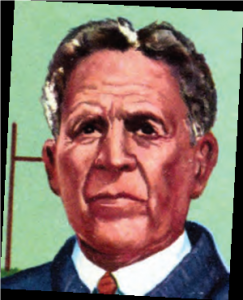
1. Amos Alonzo Stagg (West Orange) A member of the very first All-America team in 1889, he went on to rewrite the playbook for college football.
2. Vince Lombardi (Englewood) Began his legendary coaching career at St. Cecilia’s in Bergen County. More importantly, has a rest stop named after him on the NJ Turnpike.
3. Bill Parcells (Hasbrouck Heights) The Big Tuna was born and raised in Bergen County.
4. Bob Hurley, Sr. (Jersey City) 900-plus victories, 20-plus championships and the coach behind the Miracle of St. Anthony’s.
5. Gene Wettstone (West New York) Gymnastics guru coached Penn State to nine national championships between 1948 and 1976.
Honorable Mention: Effa Manley (Newark) Co-owned (but never coached) the Newark Eagles in the 1930s and 1940s, she was the first woman enshrined in the Baseball
CHANCE-TAKERS
New Jersey’s coolest sports leaders…

1. Carl Lewis (Willingboro) Won Olympic gold in ’84, ‘88, ‘92 and ‘96. Top that Michael Phelps.
2. Marty Liquori (Cedar Grove) Marty ran a sub-4:00 mile… in high school!
3. Rick Barry (Roselle Park) Last of the underhand free throw shooters.
4. Larry Doby (Paterson) He and Jackie Robinson broke baseball’s color line in 1947.
5. Franco Harris (Mt. Holly) Steelers’ star was John Grisham’s favorite football player.
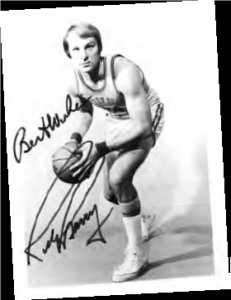
Honorable Mention: Derek Jeter (Pequannock Twp.) and Shaquille O’Neal (Newark) Both were born in Jersey but grew up elsewhere, so it’s a tie.
EARTH–QUAKERS
New Jersey’s coolest sporting events…
1. Princeton vs. Rutgers (New Brunswick 1869) The first intercollegiate football game. The first tailgaters convened three hours before kickoff.
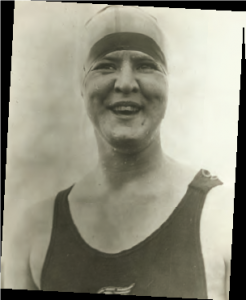
2. Cosmos vs. Santos (East Rutherford 1977) In his farewell game in jam-packed Giants Stadium, Pele scored in the first half for the Cosmos, then switched sides and scored for his old Brazilian team in the second half. His fame helped America land World Cup 94.
3. Jersey City Giants vs. Montreal Royals (Jersey City 1946) In his first game as a pro, Jackie Robinson electrified the crowd at Roosevelt Stadium with four hits and four runs in Montreal’s 14–1 victory.
4. Ederle Sets Record (Sandy Hook 1925) Gertrude Ederle set a record for the 21-mile swim that stood for more than 80 years. A year later she stroked her way across the English Channel.
5. Knickerbocker Club vs. New York Club (Hoboken 1846) The famous
“first” baseball game took place at the Elysian Field. Shhh…rumor has it that baseball was being played for 20 years before this in New York City.
Honorable Mention: Let Pepe Play! (Trenton 1974) Two years after Little League Baseball banned Hoboken’s Maria Pepe from playing with the boys, the New Jersey Supreme Court ruled in her favor. Today 50,000 girls play Little League baseball!

Photo credit: iStockphoto/Thinkstock
DRIVEABLE
New Jersey’s coolest roadways…

1. Boulevard East (Weehawken) New Yorkers pay through the nose for their Hudson River apartments, but the million-dollar view is really from the Jersey side in Northern Hudson County.
2. Green Sergeant’s Bridge (Sergeantsville) Beloved covered bridge. Scheduled to be replaced in 1960, it was rebuilt after public outcry from the people of Sergeantsville and their neighbors.
3. George Washington Bridge Iconic structure drops to #3 here because half of it is in New York.
4. Pulaski Skyway This engineering marvel gained national historic status in 2005.
5. Oceanic Bridge (Rumson & Middletown) Spanning Monmouth County’s Navesink River, it’s considered by many to be the most beautiful bridge in the state.
Honorable Mention: Bayonne Bridge One of the longest and loveliest steel arch bridges in the world.
ARRIVE–ABLE
New Jersey’s coolest tourist destinations…

1. Statue of Liberty As of 1987, Liberty Island is officially ours!
2. Atlantic City Boardwalk The longest boardwalk in the world…. but sadly, no longer home to the Miss America Pageant.
3. Jersey Shore From Sandy Hook south, more than 120 miles of beautiful beaches.
4. Cape May New Jersey’s #1 tourist destination.
5. Twin Lights The Highlands landmark was America’s launch pad for optics, wireless communications and radar technology.
Honorable Mention: Ellis Island Among the immigrants who came through this gateway were Bob Hope, Bela Lugosi, Charles Atlas and Chef Boyardee.

Photo credit: iStockphoto/Thinkstock
SOUND IDEAS
Coolest New Jersey inventions…
1. Light Bulb (Edison) Edison was actually known as Raritan Township at the time.
2. Movie Camera (Edison) Menlo Park Mall is good. Menlo Park Museum is better.
3. Phonograph (Edison) Another Edison invention. Noticing a pattern here?
4. Transistor (New Providence) A little power in, a lot of power out. The first working one came out of Bell Labs in 1947.
5. Charge-Coupled Device (Holmdel) Another miracle from Bell Labs, circa 1969. The CCD is the key component in optical devices ranging from the Hubble Telescope to the camera in your cell phone.
Honorable Mention: Electric Chair (Edison) and Jughandle (Montville) A tie—quick death vs. slow one.

FOUND IDEAS
Coolest New Jersey discoveries…
1. Radio (Highlands) Marconi proved the commercial viability of wireless communication here in 1899.
2. The Big Bang (Holmdel) Robert Wilson and Arno Penzias proved this controversial theory with their experiments in cosmic background radiation at Bell Labs in 1964.
3. Dinosaurs (Haddonfield) The 1858 discovery of the aptly named Hadrosaur in a New Jersey marl pit launched American paleontology.
4. Antibiotics (Piscataway) Rutgers-educated Nobel Prize winner Selman Waksman developed (and named) these disease-fighting drugs in the 1940s.
5. Zincite (Franklin) Rare zinc oxide crystals, abundant only in New Jersey, were the “crystals” used in the first radio Crystal Sets before the advent of vacuum tubes.
Honorable Mention: Valium (Nutley) Making it all better since 1963. Thank you, Hoffmann–La Roche.
FULL BLOWN
New Jersey’s coolest headlines…
1. Hindenburg Disaster (Lakehurst 1937) Definitely not a miracle of German engineering.
2. Lindbergh Kidnapping (East Amwell 1932) H.L. Mencken called the abduction of the hero aviator’s son the “biggest story since the Resurrection.”
3. Martian Landing (Grover’s Mill 1938) Orson Welles’s Halloween prank proved the power of radio.
4. President Garfield Dies (Elberon 1881) He moved to the Jersey Shore two months after an assassination attempt and died 13 days later.
5. Black Tom Blast (Jersey City 1916) World War I sabotage in New York Harbor riddled the Statue of Liberty and shook windows all the way to Philadelphia.
Honorable Mention: Washington Crosses the Delaware (Titusville 1776) No actual headlines, but too important to leave out.

HOME GROWN
New Jersey’s coolest edibles…
1. Jersey Tomatoes Technically a fruit… which is probably why it’s New Jersey’s official state vegetable. 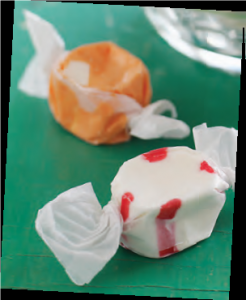
2. Jersey White Corn Sweet and tender. Hey, no stripping the corn in the store!
3. Salt Water Taffy Your dentist has just ordered new furniture for his living room.
4. Jersey Blueberries Once thought to be poisonous, today’s blueberries are the result of early genetic engineering.
5. Jersey Eggplant We grow more than any state in the nation. Can you say rollatini?
Honorable Mention: Taylor Pork Roll Introduced by John Taylor of Trenton. Unchanged since the 1850s. Why mess with…urp…perfection?
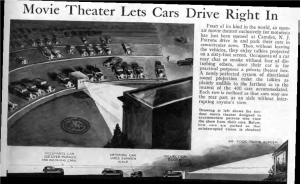
GLOBALLY KNOWN
New Jersey’s coolest cultural “firsts”…
1. Air Mail The first Air Mail service went via sea plane from Keyport to Chicago in the 1920s.
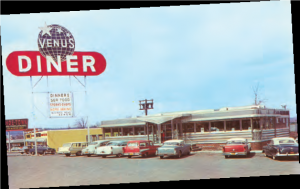
2. Diners The first gleaming pre-fab diners were made in Elizabeth during World War I.
3. Drive-In Movies The world’s first opened for business in Pennsauken in 1933.
4. Lazy Susan Keyport again! The first was produced by William Beadle in 1854.
5. Campbell’s Soup The Camden company was an international brand more than a half-century before Andy Warhol turned its cans into pop art. Now sold in 120 countries.
Honorable Mention: MTV’s Jersey Shore Proving you don’t have to be good to be cool.
PLEASE DON’T GROAN
Some final cool things about New Jersey that the world has yet to fully appreciate…
1. No Self-Serve Gas If I had the choice, I’d never fill ’er up in another state.
2. Pledge of Allegiance First recited as the National Loyalty Oath at the Twin Lights in Highlands in 1893.
3. The Pine Barrens A UN International Biosphere Reserve and home of the Jersey Devil. What’s not to like?
4. Omission of T’s in the middle of words Mitten, Kitten, Bitten.
5. Omission of R’s at the end of words …Ovuh, Rovuh, Clovuh.
Honorable Mention: Kelly Ripa Liked her on All My Children. Love her on Live with Regis.

Photo credit: iStockphoto/Thinkstock
Editor’s Note: Thanks to Christine Gibbs, Rachel Rutledge, Mariah Morgan, Caleb MacLean and Lily Kennedy for their work on this feature. Special thanks to the Twin Light Historical Society (twin-lights.org). Memorabilia images courtesy of Upper Case Editorial Services.
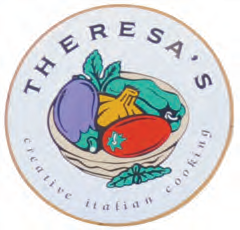 THERESA’S The always-smart partnership of shellfish and beans makes for a simple, yet engaging starter. Shrimp are marinated, then grilled, and plated with a white bean salad. The pair is united by a sweet flash of roasted red pepper and the herbal kick of a pesto-laced oil. Flashy and fussy? No. Soulful and satisfying? Yes. So is a local favorite pasta dish, the now-classic penne with vodka sauce. It’s so often tired and trite, laden with massive amounts of sauce that prompt giggles among teens, who think they’ll get a buzz from a sauce labeled “vodka.” Sorry. There’s a vaguely astringent quality to the spirited sauce, but what gives Theresa’s version of the dish a lift above the norm is the carbonara-like addition of crumbled pancetta and sweet peas. Potent in a non-alcoholic way. It’s possible that riots would ensue in genteel Westfield if the asiago-crusted chicken ever were taken off Theresa’s menu. Our polite server on this night said there was no chance of that. Folks love the cheese-on-cheese aspect of the dish, what with mozzarella layered in the mix. It’s all balanced by a dose of tomato and a garlicky cream sauce. If you’re looking for a sweet-tart sensation, give the balsamic-and apricot-glazed pork tenderloin a go. It’s got the appeal of something barbecued as well as a couple of hearty standbys on the side in garlic-licked mashed potatoes and a tangle of spinach. The dessert of choice? A dense, yet light, flourless chocolate cake that demands, and receives, a dollop of vanilla gelato.
THERESA’S The always-smart partnership of shellfish and beans makes for a simple, yet engaging starter. Shrimp are marinated, then grilled, and plated with a white bean salad. The pair is united by a sweet flash of roasted red pepper and the herbal kick of a pesto-laced oil. Flashy and fussy? No. Soulful and satisfying? Yes. So is a local favorite pasta dish, the now-classic penne with vodka sauce. It’s so often tired and trite, laden with massive amounts of sauce that prompt giggles among teens, who think they’ll get a buzz from a sauce labeled “vodka.” Sorry. There’s a vaguely astringent quality to the spirited sauce, but what gives Theresa’s version of the dish a lift above the norm is the carbonara-like addition of crumbled pancetta and sweet peas. Potent in a non-alcoholic way. It’s possible that riots would ensue in genteel Westfield if the asiago-crusted chicken ever were taken off Theresa’s menu. Our polite server on this night said there was no chance of that. Folks love the cheese-on-cheese aspect of the dish, what with mozzarella layered in the mix. It’s all balanced by a dose of tomato and a garlicky cream sauce. If you’re looking for a sweet-tart sensation, give the balsamic-and apricot-glazed pork tenderloin a go. It’s got the appeal of something barbecued as well as a couple of hearty standbys on the side in garlic-licked mashed potatoes and a tangle of spinach. The dessert of choice? A dense, yet light, flourless chocolate cake that demands, and receives, a dollop of vanilla gelato. 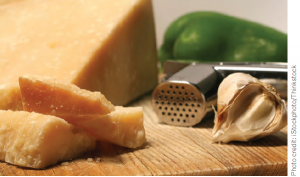
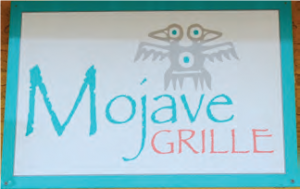 MOJAVE GRILL There was a special soup on tap the night of our visit that intrigued: caramelized onion and potato, punctuated by the freshness of scallions and topped with crisped onions that have been shot through with cayenne. Of all the Scalera concepts, I’ve liked Mojave the best. There’s bolder seasoning and more of a distinctive personality on the plates, particularly on the specials’ roster. This soup crystallizes why?: The onion-potato soup is thick, rich and calls for counterpoint, which it gets in the rawness of the scallions and the heat of the crunchy cayenne’d onions. The signature black bean soup needs its jalapeno spike, as well as the luxurious lime crema, chunks of avocado and chopped, spiced tomato. Extra dimension in a dish
MOJAVE GRILL There was a special soup on tap the night of our visit that intrigued: caramelized onion and potato, punctuated by the freshness of scallions and topped with crisped onions that have been shot through with cayenne. Of all the Scalera concepts, I’ve liked Mojave the best. There’s bolder seasoning and more of a distinctive personality on the plates, particularly on the specials’ roster. This soup crystallizes why?: The onion-potato soup is thick, rich and calls for counterpoint, which it gets in the rawness of the scallions and the heat of the crunchy cayenne’d onions. The signature black bean soup needs its jalapeno spike, as well as the luxurious lime crema, chunks of avocado and chopped, spiced tomato. Extra dimension in a dish 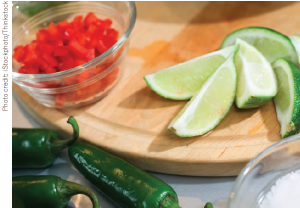 is why we eat out, so we can experience what we might not do for ourselves at home. We tend not to make tuna ceviche at home very often, either, which is why Mojave’s faithful snag the chunks of yellowfin made brazen by ginger and pasilla chilies and then soothed by cooling cucumbers and avocado. Tune into the pulled chicken enchiladas and, if you’re in the mood for comfort food, for the ancho mole, red rice and black beans with a swath of cotija cheese and sultry crema. They’re just about as harmonic as a chorus from The Mamas and The Papas. If you’re craving quesadillas, nab the blackened chicken number that comes cosseted with a Monterey Jack-esque cheese and a generous slather of avocado-basil aioli. I wasn’t taken with the yucca-crusted grouper, a nightly special, for the grouper was overcooked, the taste of the yucca not doing a thing for the fish, and the red pepper puree overwhelming. The one-two punch of seared flank steak topped with a vigorous chimichurri hit on all cylinders, though—and it just might make you whip up your own take on the parsley-garlic-hot pepper-vinegar sauce this summer when you’re grilling a flank steak in your backyard.
is why we eat out, so we can experience what we might not do for ourselves at home. We tend not to make tuna ceviche at home very often, either, which is why Mojave’s faithful snag the chunks of yellowfin made brazen by ginger and pasilla chilies and then soothed by cooling cucumbers and avocado. Tune into the pulled chicken enchiladas and, if you’re in the mood for comfort food, for the ancho mole, red rice and black beans with a swath of cotija cheese and sultry crema. They’re just about as harmonic as a chorus from The Mamas and The Papas. If you’re craving quesadillas, nab the blackened chicken number that comes cosseted with a Monterey Jack-esque cheese and a generous slather of avocado-basil aioli. I wasn’t taken with the yucca-crusted grouper, a nightly special, for the grouper was overcooked, the taste of the yucca not doing a thing for the fish, and the red pepper puree overwhelming. The one-two punch of seared flank steak topped with a vigorous chimichurri hit on all cylinders, though—and it just might make you whip up your own take on the parsley-garlic-hot pepper-vinegar sauce this summer when you’re grilling a flank steak in your backyard. As I scooped up the last of the spiced walnuts in the orange-and-arugula salad at ISABELLA’S, I sensed an impatience on the part of my dining companion. It took no special powers of deduction for me to realize my pal wanted our bacon- Cheddar meatloaf now. It soon arrived and began to disappear. I managed to score two bites and reasonable enough spoonfuls of mashed potatoes and creamed spinach, both of which benefit from gravy chunky with shallots. You’d think meatloaf is only served in this country when the moon is full on a fourth Tuesday the way some people attack slices of the stuff. There’s no denying the appeal of Isabella’s meatloaf. (Which has a lot to do with an abundance of bacon, I suspect.) While the attack on the meatloaf was taking place, I took advantage of an uninterrupted spell communing with the night’s special ravioli: pasta pockets stuffed with goat cheese and roasted red peppers, then drizzled with a vibrant tomato-pesto sauce. There’s an accord reached on the fettuccine tossed
As I scooped up the last of the spiced walnuts in the orange-and-arugula salad at ISABELLA’S, I sensed an impatience on the part of my dining companion. It took no special powers of deduction for me to realize my pal wanted our bacon- Cheddar meatloaf now. It soon arrived and began to disappear. I managed to score two bites and reasonable enough spoonfuls of mashed potatoes and creamed spinach, both of which benefit from gravy chunky with shallots. You’d think meatloaf is only served in this country when the moon is full on a fourth Tuesday the way some people attack slices of the stuff. There’s no denying the appeal of Isabella’s meatloaf. (Which has a lot to do with an abundance of bacon, I suspect.) While the attack on the meatloaf was taking place, I took advantage of an uninterrupted spell communing with the night’s special ravioli: pasta pockets stuffed with goat cheese and roasted red peppers, then drizzled with a vibrant tomato-pesto sauce. There’s an accord reached on the fettuccine tossed 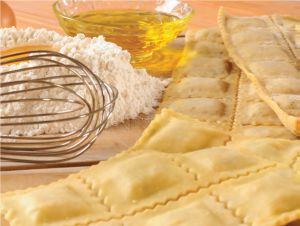 with baby shrimp, corn, sweet peas, sundried tomatoes and mushrooms, all of which is bound by a chipotle-charged cream sauce. This is vintage Scalera and what I think his restaurants do best: Take a bunch of familiar ingredients, a concept that’s not off-putting, then jazz it all up to the level of food you expect when you go out to eat. My wish for Isabella’s? That it would pair a cut of beef other than filet mignon with a crust of peppercorns. That intense coating would work much better with a chewier, heartier flavor, such as strip steak or rib-eye, than it does with a mildmannered filet. But all ends well here with a banana-studded bread pudding streaked with caramel and served with vanilla ice cream. It usually does at Westfield’s trio of winners. EDGE
with baby shrimp, corn, sweet peas, sundried tomatoes and mushrooms, all of which is bound by a chipotle-charged cream sauce. This is vintage Scalera and what I think his restaurants do best: Take a bunch of familiar ingredients, a concept that’s not off-putting, then jazz it all up to the level of food you expect when you go out to eat. My wish for Isabella’s? That it would pair a cut of beef other than filet mignon with a crust of peppercorns. That intense coating would work much better with a chewier, heartier flavor, such as strip steak or rib-eye, than it does with a mildmannered filet. But all ends well here with a banana-studded bread pudding streaked with caramel and served with vanilla ice cream. It usually does at Westfield’s trio of winners. EDGE  Editor’s Note: Andy Clurfield is a former editor of Zagat New Jersey. The longtime food critic for the Asbury Park Press also has been published in Gourmet, Saveur and Town & Country, and on epicurious.com.
Editor’s Note: Andy Clurfield is a former editor of Zagat New Jersey. The longtime food critic for the Asbury Park Press also has been published in Gourmet, Saveur and Town & Country, and on epicurious.com.
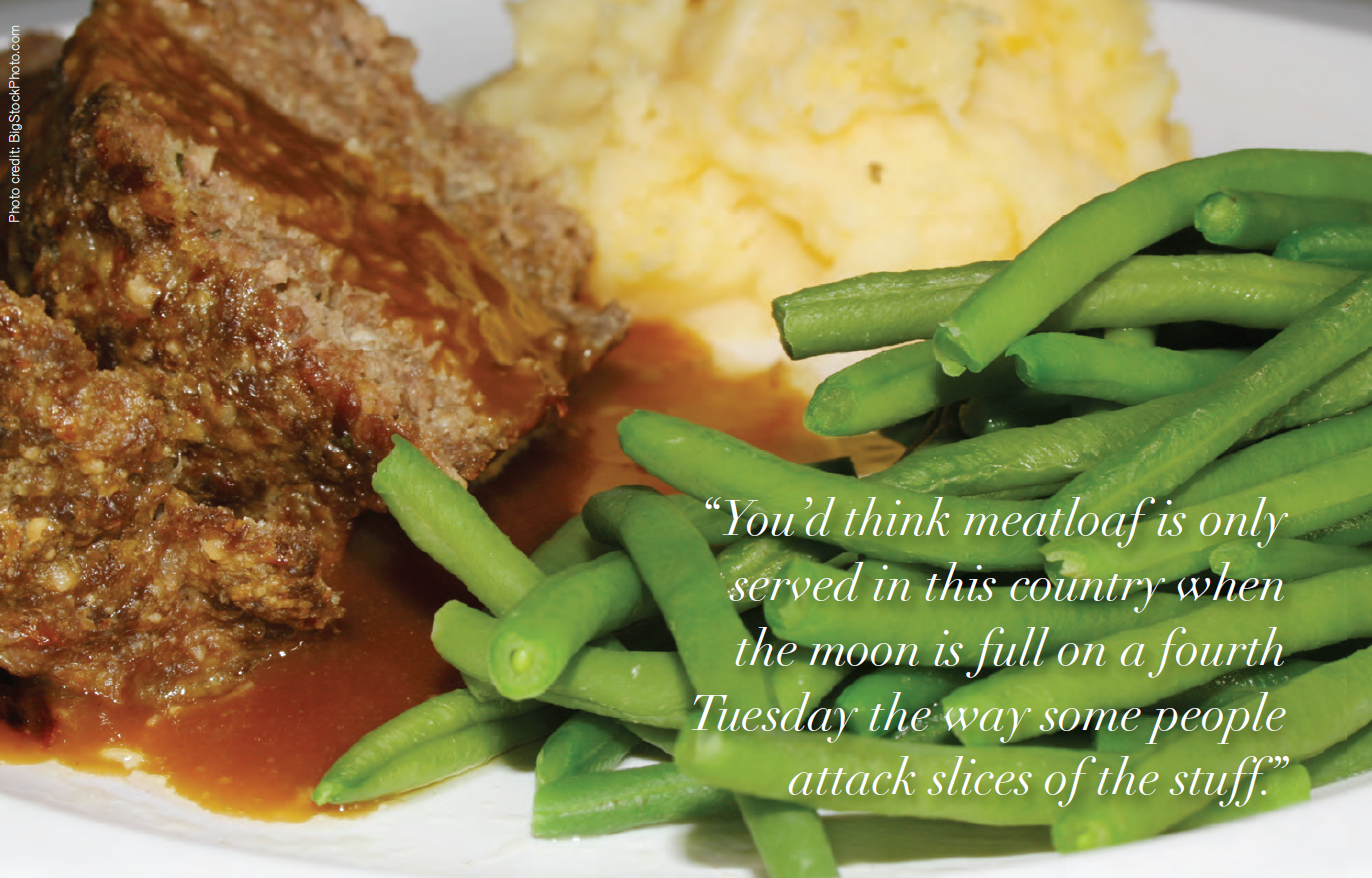
 will be noticeably lighter and you’ll feel like you just spent four hours in an overgrown cow pasture. That being said, Ken Wang isn’t your normal golf course owner. And Pound Ridge Golf Club in Westchester County is hardly your normal course. “It has a sublime rhythm,” says Wang, a married father of three sons, MIT grad and brother of famed fashion designer Vera Wang. “You remember every hole individually. The course has a certain harmony and serenity.” “May and June are beautiful here,” adds Todd Leavenworth, the general manager at Pound Ridge GC, “but you can’t beat the fall. That’s the best time of year for the course.” When Pound Ridge is green and lush, it’s a sight to behold. Designed by the legendary Pete Dye, the course is about 90 minutes away from Central New Jersey. It’s distinguished by unique rock formations and breathtaking views, including several of the Long Island Sound. In typical Dye fashion, there is an exquisite logic to the course, a quality that appeals to the mathematician in Wang. “It’s hard to pinpoint my favorite holes,” he says. “I love number 7, number 10 and number 11. They are gorgeous.” Leavenworth gushes about the par-3 15th hole known as Headstone. “It’s spectacular,” he says. “There is white marble behind the green that slopes at about a 20-degree pitch. You can actually hit to the marble and have the ball roll back toward the hole.” One feature of Pound Ridge GC that golfers of all levels love is the number of tees per hole—a staple of any
will be noticeably lighter and you’ll feel like you just spent four hours in an overgrown cow pasture. That being said, Ken Wang isn’t your normal golf course owner. And Pound Ridge Golf Club in Westchester County is hardly your normal course. “It has a sublime rhythm,” says Wang, a married father of three sons, MIT grad and brother of famed fashion designer Vera Wang. “You remember every hole individually. The course has a certain harmony and serenity.” “May and June are beautiful here,” adds Todd Leavenworth, the general manager at Pound Ridge GC, “but you can’t beat the fall. That’s the best time of year for the course.” When Pound Ridge is green and lush, it’s a sight to behold. Designed by the legendary Pete Dye, the course is about 90 minutes away from Central New Jersey. It’s distinguished by unique rock formations and breathtaking views, including several of the Long Island Sound. In typical Dye fashion, there is an exquisite logic to the course, a quality that appeals to the mathematician in Wang. “It’s hard to pinpoint my favorite holes,” he says. “I love number 7, number 10 and number 11. They are gorgeous.” Leavenworth gushes about the par-3 15th hole known as Headstone. “It’s spectacular,” he says. “There is white marble behind the green that slopes at about a 20-degree pitch. You can actually hit to the marble and have the ball roll back toward the hole.” One feature of Pound Ridge GC that golfers of all levels love is the number of tees per hole—a staple of any course designed by Dye. There are at least five tees on every hole, and some have six. “Pete is sensitive to the fact that all golfers don’t play at the same level,” says Wang. “When you play Pound Ridge from the correct tees, it’s a very enjoyable experience. The course is unusually fair to women.” There’s a good reason for that—Dye’s wife, Alice. The winner of nine Indiana Women’s Golf Association Amateur Championships, she has her husband’s ear every time he starts work on a new course. “Pound Ridge was a family affair,” says Wang. “Alice gets extremely involved whenever Pete is designing a course. She makes him more in touch with how women play the game.” “This is a really fun course for women,” he adds. “Probably more so than any other course I know.” Dye also puts a premium on exactitude. To score well at Pound Ridge GC, you have to hit the ball straight and the correct yardage. “The first time I played Pound Ridge, I felt like I had stepped into a math problem,” Wang recalls. “There’s an elegance to the course and artistry to the environment.” That’s a good way to describe the area surrounding Pound Ridge, as well. The closest neighboring towns are Bedford in New York and Greenwich and New Canaan in Connecticut. Close enough for a day trip, the surrounding area also offers enough to build a romantic weekend or ladies overnight around a round or two of golf. There are great restaurants, charming inns, lots of antique stores and all manner of shopping. Soon, says Wang, golfers at Pound Ridge GC won’t have to leave the course for a good meal. He has been working with architects on building a clubhouse. “It’s a funny project,” he says. “We’re talking about a ‘destination course’ in a residential area. We get local members and people flying in from London and Japan. We have several audiences to please.” With the current trend in clubhouse construction trending toward downsizing, Wang has shed his notions of what a traditional design looks like. Fortunately, he has a sister who knows a little bit about style. “Vera is pretty hip,” Wang says. “I defer to the higher power. She reminds me that the world isn’t filled with wood-panelled walls.” There’s always a chance that visitors to Pound Ridge GC will bump into Vera. According to Ken, she plays there several
course designed by Dye. There are at least five tees on every hole, and some have six. “Pete is sensitive to the fact that all golfers don’t play at the same level,” says Wang. “When you play Pound Ridge from the correct tees, it’s a very enjoyable experience. The course is unusually fair to women.” There’s a good reason for that—Dye’s wife, Alice. The winner of nine Indiana Women’s Golf Association Amateur Championships, she has her husband’s ear every time he starts work on a new course. “Pound Ridge was a family affair,” says Wang. “Alice gets extremely involved whenever Pete is designing a course. She makes him more in touch with how women play the game.” “This is a really fun course for women,” he adds. “Probably more so than any other course I know.” Dye also puts a premium on exactitude. To score well at Pound Ridge GC, you have to hit the ball straight and the correct yardage. “The first time I played Pound Ridge, I felt like I had stepped into a math problem,” Wang recalls. “There’s an elegance to the course and artistry to the environment.” That’s a good way to describe the area surrounding Pound Ridge, as well. The closest neighboring towns are Bedford in New York and Greenwich and New Canaan in Connecticut. Close enough for a day trip, the surrounding area also offers enough to build a romantic weekend or ladies overnight around a round or two of golf. There are great restaurants, charming inns, lots of antique stores and all manner of shopping. Soon, says Wang, golfers at Pound Ridge GC won’t have to leave the course for a good meal. He has been working with architects on building a clubhouse. “It’s a funny project,” he says. “We’re talking about a ‘destination course’ in a residential area. We get local members and people flying in from London and Japan. We have several audiences to please.” With the current trend in clubhouse construction trending toward downsizing, Wang has shed his notions of what a traditional design looks like. Fortunately, he has a sister who knows a little bit about style. “Vera is pretty hip,” Wang says. “I defer to the higher power. She reminds me that the world isn’t filled with wood-panelled walls.” There’s always a chance that visitors to Pound Ridge GC will bump into Vera. According to Ken, she plays there several times a year. “Vera is a pretty good player,” he says. “I’m probably better on the first ball, but she likes to throw down a second sometimes. She’s usually better on that one.” Ken’s sister isn’t the only celebrity who frequents the Pound Ridge area. Richard Gere, Susan Sarandon, Tim Robbins and Mike Myers are among those who claim residency in and around the town. Gere also owns a cozy place there, the Bedford Post Inn (above). While Wang prefers to stay out of the spotlight, he can’t deny the legacy he has created at Pound Ridge GC. “I didn’t use to think of it in those terms,” he says. “I started playing golf as a kid. The idea to buy the Pound Ridge property came after my father built a house in town in 1980. When we decided to turn the course into 18 holes, it took nine years to get all the approvals. Now we have a glamorous golf course that is very sensitive to the environment. It’s unlike any other course in the area. It’s nice to know that you’ve built something that will be around for a long while.” EDGE
times a year. “Vera is a pretty good player,” he says. “I’m probably better on the first ball, but she likes to throw down a second sometimes. She’s usually better on that one.” Ken’s sister isn’t the only celebrity who frequents the Pound Ridge area. Richard Gere, Susan Sarandon, Tim Robbins and Mike Myers are among those who claim residency in and around the town. Gere also owns a cozy place there, the Bedford Post Inn (above). While Wang prefers to stay out of the spotlight, he can’t deny the legacy he has created at Pound Ridge GC. “I didn’t use to think of it in those terms,” he says. “I started playing golf as a kid. The idea to buy the Pound Ridge property came after my father built a house in town in 1980. When we decided to turn the course into 18 holes, it took nine years to get all the approvals. Now we have a glamorous golf course that is very sensitive to the environment. It’s unlike any other course in the area. It’s nice to know that you’ve built something that will be around for a long while.” EDGE 
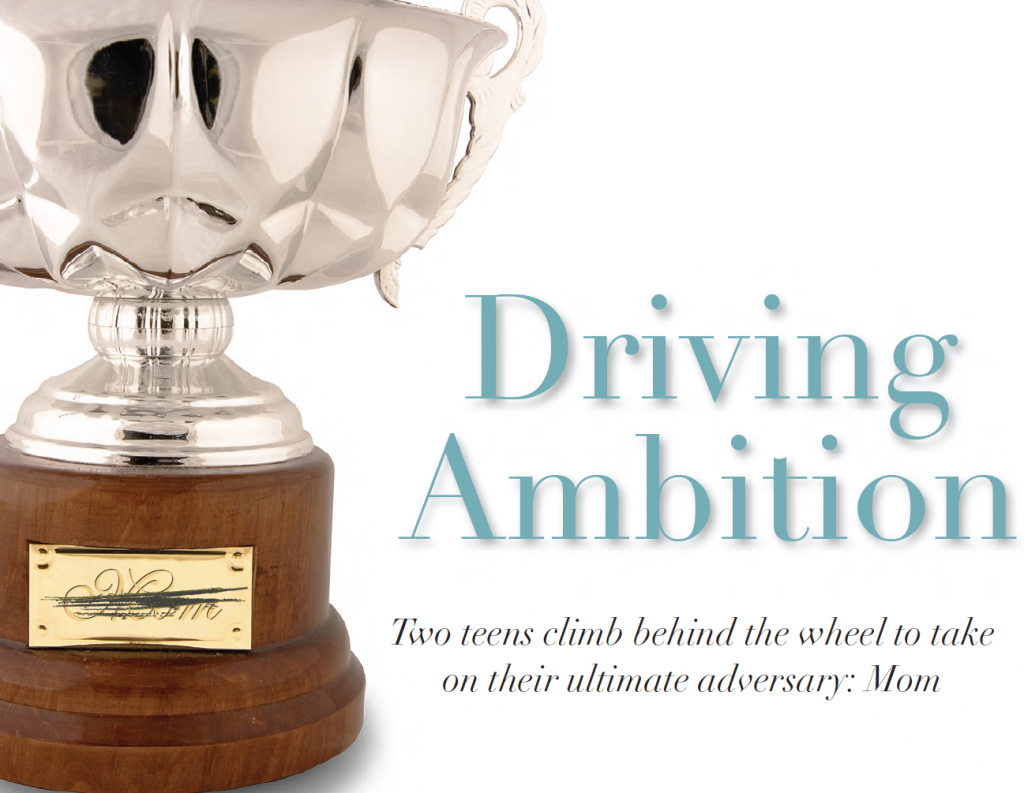
 Position Raceway, the indoor karting venue located near the Liberty Science Center in Jersey City. She admits she was itching to teach Michael and George a lesson as all three pulled on their helmets and strapped themselves into their karts (which—because of Michael’s age—were limited to a still-speedy 30 mph). Suzanne also admits to underestimating the fact that her sons work together like Velociraptors. With their three vehicles lined up one behind the other to start, the boys insisted she have the honor of taking the lead kart. In almost any race, both teens knew, you want your adversary ahead of you so you can choose the time and place of their ultimate defeat. In other words, she was dead meat before they started their engines. The flag dropped and the three roared into the first turn. Moments later, Suzanne found herself in third place. A nudge from George and then a stronger bump from Michael sent her into the black-and-yellow padded barrier. By the time she got back up to speed, she was playing catch-up. She never did close the gap on her sons, who showed her no mercy and gave her no daylight. They were too busy fighting for fraternal supremacy. George edged Michael at the finish line, with Suzanne a few heartbeats behind. “I should have realized they would never let me win,” she says bemusedly. “Even though I’m their mother, they will still win at any cost. The mistake I made was that I never should have started in front of them.” In the days that followed, as Suzanne returned to chauffer duties, mother and sons had something new to discuss: the fact that they were now officially, indisputably and undeniably “better drivers” than she—against a wealth of evidence still to the contrary. Suzanne reminded Michael and George that she had nearly caught up to them after they sent her into the wall. They corrected their mother, informing her that she had actually fallen a full lap behind! Shifting gears quickly, Suzanne pointed out that handling a kart at 30 mph takes considerably less skill and experience than zig-zagging through Turnpike traffic at 75 (although for the record she has never done that). Blank stares. Exasperated, Suzanne said that intentionally running your materfamilias off the road doesn’t make you a “better driver”—it makes you a dangerous one. Michael and George refused to dignify their mother’s accusations of collusion and dirty driving. Both maintain that Suzanne was the unfortunate victim of an unlucky accident. Looking back, Suzanne says the only humiliation she actually
Position Raceway, the indoor karting venue located near the Liberty Science Center in Jersey City. She admits she was itching to teach Michael and George a lesson as all three pulled on their helmets and strapped themselves into their karts (which—because of Michael’s age—were limited to a still-speedy 30 mph). Suzanne also admits to underestimating the fact that her sons work together like Velociraptors. With their three vehicles lined up one behind the other to start, the boys insisted she have the honor of taking the lead kart. In almost any race, both teens knew, you want your adversary ahead of you so you can choose the time and place of their ultimate defeat. In other words, she was dead meat before they started their engines. The flag dropped and the three roared into the first turn. Moments later, Suzanne found herself in third place. A nudge from George and then a stronger bump from Michael sent her into the black-and-yellow padded barrier. By the time she got back up to speed, she was playing catch-up. She never did close the gap on her sons, who showed her no mercy and gave her no daylight. They were too busy fighting for fraternal supremacy. George edged Michael at the finish line, with Suzanne a few heartbeats behind. “I should have realized they would never let me win,” she says bemusedly. “Even though I’m their mother, they will still win at any cost. The mistake I made was that I never should have started in front of them.” In the days that followed, as Suzanne returned to chauffer duties, mother and sons had something new to discuss: the fact that they were now officially, indisputably and undeniably “better drivers” than she—against a wealth of evidence still to the contrary. Suzanne reminded Michael and George that she had nearly caught up to them after they sent her into the wall. They corrected their mother, informing her that she had actually fallen a full lap behind! Shifting gears quickly, Suzanne pointed out that handling a kart at 30 mph takes considerably less skill and experience than zig-zagging through Turnpike traffic at 75 (although for the record she has never done that). Blank stares. Exasperated, Suzanne said that intentionally running your materfamilias off the road doesn’t make you a “better driver”—it makes you a dangerous one. Michael and George refused to dignify their mother’s accusations of collusion and dirty driving. Both maintain that Suzanne was the unfortunate victim of an unlucky accident. Looking back, Suzanne says the only humiliation she actually  suffered that evening was being photographed on the victory stand with her boys (now both six-footers) towering over her. Otherwise, it was a tremendous experience. “It was very entertaining,” she says. “We thoroughly enjoyed ourselves. It’s a great place. We hung out for an hour after the race. The people there couldn’t be nicer.” Okay, down to brass tacks. In a return engagement, does Suzanne think she would avenge her defeat? “I do,” she says with a competitive smirk. And just how? “No way I’m divulging my strategy! Let’s just say that Mom’s still got a few tricks up her sleeve.” EDGE
suffered that evening was being photographed on the victory stand with her boys (now both six-footers) towering over her. Otherwise, it was a tremendous experience. “It was very entertaining,” she says. “We thoroughly enjoyed ourselves. It’s a great place. We hung out for an hour after the race. The people there couldn’t be nicer.” Okay, down to brass tacks. In a return engagement, does Suzanne think she would avenge her defeat? “I do,” she says with a competitive smirk. And just how? “No way I’m divulging my strategy! Let’s just say that Mom’s still got a few tricks up her sleeve.” EDGE 

 overweight, and 30 percent is obese,” he says. “And the children’s statistics are even more mind-boggling—nine million American kids were considered obese, a rate that has nearly doubled in the last 20 years. It’s getting out of control at an epidemic rate.” Fortunately, there are measures you can take to fight back—even if you have to eat fast:
overweight, and 30 percent is obese,” he says. “And the children’s statistics are even more mind-boggling—nine million American kids were considered obese, a rate that has nearly doubled in the last 20 years. It’s getting out of control at an epidemic rate.” Fortunately, there are measures you can take to fight back—even if you have to eat fast:  financially, but could cost you your health. “To help spread out the calories, consider eating half of it and giving the other half to your partner or taking it home for another meal,” Dr. Eckman advises.
financially, but could cost you your health. “To help spread out the calories, consider eating half of it and giving the other half to your partner or taking it home for another meal,” Dr. Eckman advises.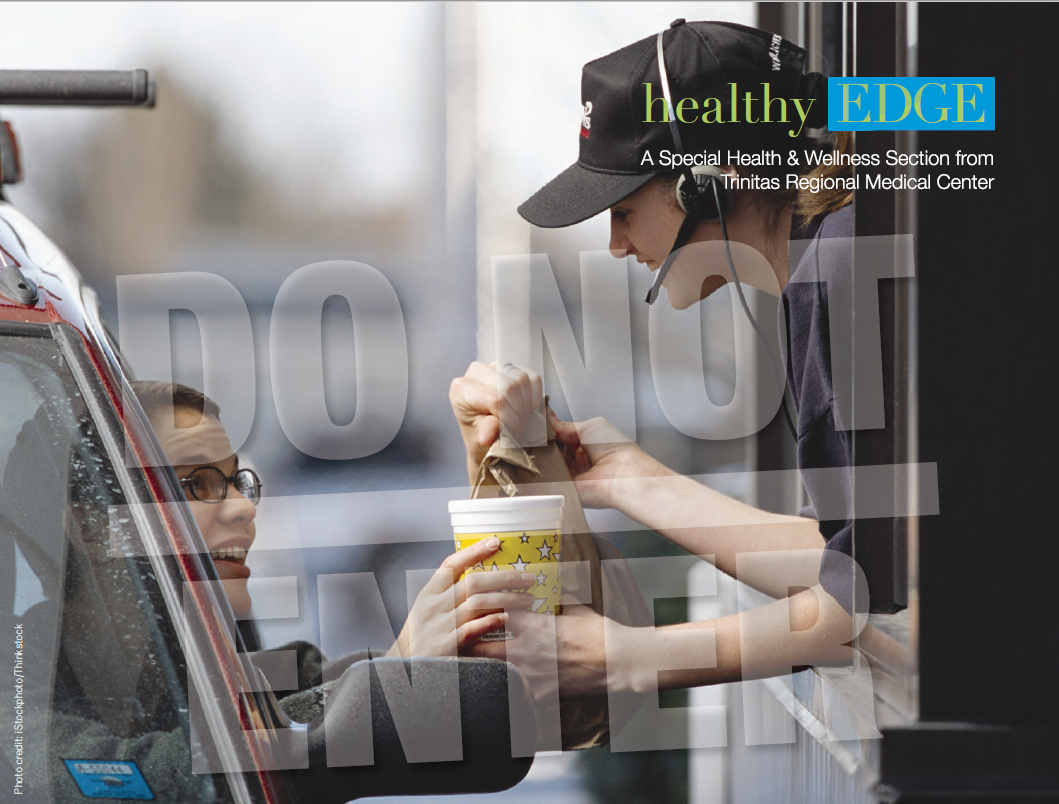

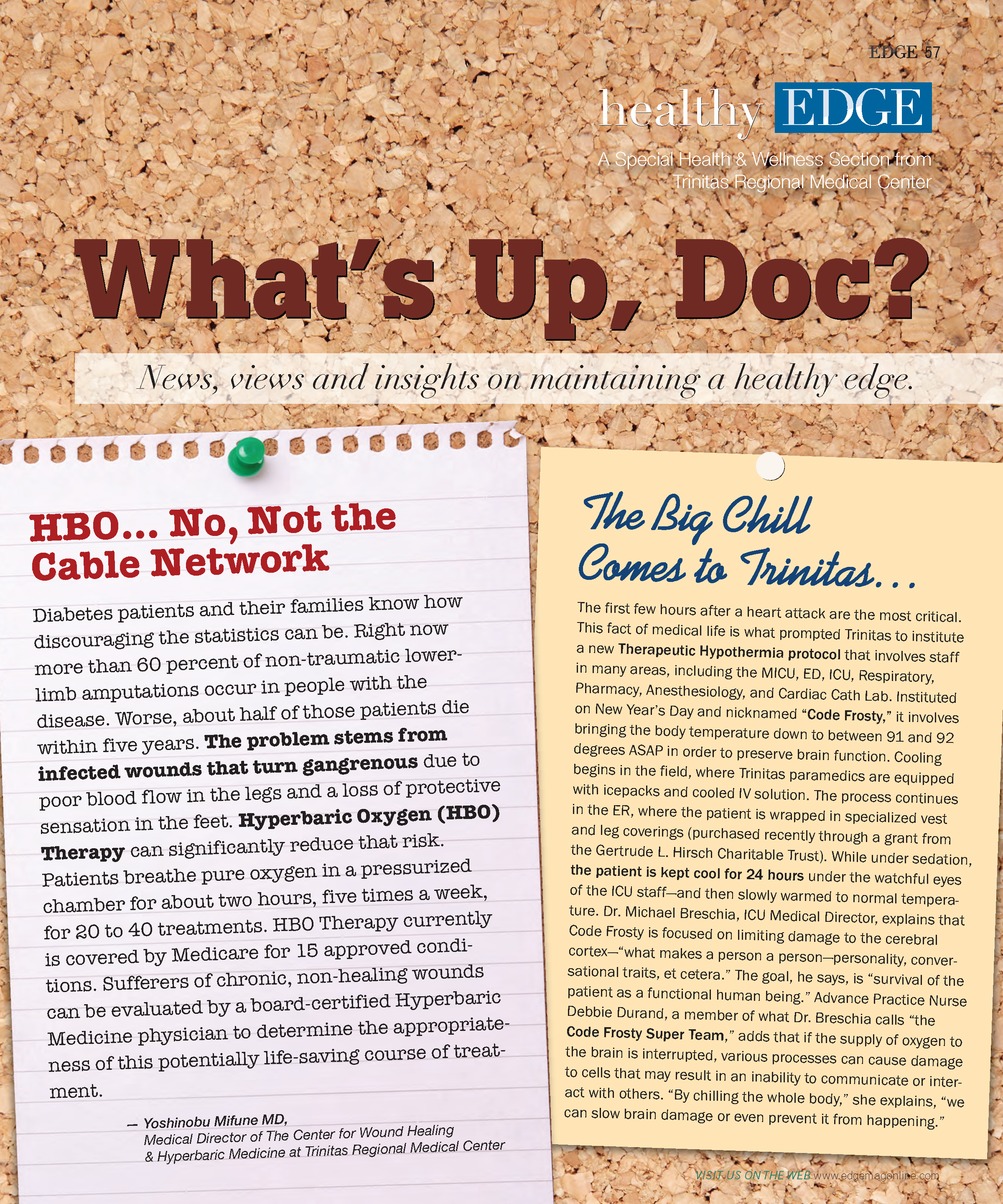
 of competition in a fun and lively story. Alas, the original writer, having been stuck in one too many snowdrifts during the winter that wouldn’t quit, bowed out after hearing rumors that the top two-thirds of the Garden State Parkway might be a sheet of ice on the morning in question. With one child in college and another getting close, a gruesome highway death didn’t seem to have the same downside for me, so I agreed to go in her place. In the spirit of full disclosure, I should point out here that I am not a dog person. And they seem to know it. Even “my own” dog—the one my wife and daughters outvoted me on 3-to- 1—is careful not to irritate me. I’ll spare you my troubled history with canine-Americans. Not that it isn’t interesting. It’s just that I can’t stand it when other people yammer on about their childhood this and childhood that. Upon arriving at the convention center, I was greeted with open arms by show officials, who cheerfully tolerated me as I got my facts straight and asked a lot of stupid questions over a quick lunch. Then it was out onto the floor. My goal? Quietly observe, form an opinion, and then dig-dig-dig until I understood what it means to compete at a real dog show. What surprised me after watching several breeds go through judging was that the dogs were not eyeing one another or trying to intimidate each other, at least not that I could tell. They were completely absorbed by their work. And make no mistake, they treated it like work. It’s a job they love, of course—a champion show dog has to enjoy the experience. However, there was no interplay between the animals even when they were standing inches apart in the ring. It was a little weird, but I got it. These were the “pros” of canine competition. Whatever makes my dog run in crazed circles around vehicles exiting—but not entering— our driveway had been bred out of these animals. Still, this was a competition, with money and prestige at stake. Someone in the building was driven to win. I just had to find out whom. I decided to cruise the aisles between the different handlers. Each had a space staked out, with dogs in crates, dogs on grooming stands, and dogs on their way to and from the judging rings. An unattended Cocker Spaniel eyed me with suspicion and I returned its glance with a raised eyebrow. I hadn’t lost my touch. The animal leaped off the table and ran down the aisle in front of me, causing a brief panic. I felt bad, like I’d broken something in an antique shop. Since the dogs clearly were not going to help me, I turned my attention to the people preparing them for competition. I’m better with people anyway. Among the many top handlers and trainers present at this event was one who towered over the rest, at least figuratively. His name is Kaz Hosaka, and he is to the poodle world what Michael Jordan is to basketball. Smooth, clever, elegant and nearly unbeatable. (And he’s been on Charlie Rose, so take that other poodle handlers!) Based out of Greenwood, Delaware, Hosaka attends as many as 150 shows a year and has been honing poodles like samurai swords for three decades. You do the math. The important number is #1, and he has racked up a bunch of ’em during his career, including the #1 toy poodle in 2010. Hosaka is a “finisher” of dogs. In other words, if you think you’ve lucked into a great poodle, Kaz is the man who knows how to transform it into a champion. He won’t take a dog unless he truly believes it can be a winner. Often he must break the bad news: This is a wonderful pet, but not a show dog. That being said, Hosaka will consider animals that other handlers have turned down because they may be too difficult. “I am the last stop,” he smiles. “If I can’t do it, nobody can.” Like many in his profession, Hosaka (left) is a handler of owners, too. Most ship their dogs off like boarding-school kids, dropping in occasionally to monitor their progress at important shows. The bulk of handler-owner contact is accomplished over the phone. When one does appear at an event, Hosaka’s rule number-one is don’t come near his set-up and throw your poodle off its game. Helicopter parenting may be tolerated in the human world, but during shows it is definitely frowned upon. One owner who left her dog alone was Charlize Sutton, and the strategy paid off. Her confident little Norwich Terrier went out and blew the fleas off the competition, grabbing Best in Breed. Charlize had more pressing matters to attend to, barely acknowledging the victory. She had her nose buried in an iPad, watching Dora the Explorer. Charlize is two—by far the youngest owner I could locate, though probably not, a neighboring groomer whispered to me, the least mature. Charlize (right) was stationed in a portable playpen in the midst of a dizzying ballet involving three humans, 17 dogs and a seemingly endless array of clippers, snippers, brushes and blowers, each of which was wielded with maximum expertise and minimum effort. Her parents, Jessy and Roxanne, along with assistant Tom Durst, have a first-class operation back in Narvon, Pennsylvania, and they get paid well for the work they do. The Suttons were on a winning streak when I barged into their little corner of doggie heaven. Miles, a regal, self-possessed Rhodesian Ridgeback, was returning from the judging ring with, yawn, another Best in Breed nod. Miles looked like he could stare down a lion (which, apparently, he was bred for), and so did Jessy. He handles the working breeds at shows, while Roxanne works her magic with terriers. “We are sticklers for conditioning,” Jessy responded when I asked what gave his dogs an edge. “When an owner hires us, it may not seem cost-effective right away, but the constant work we do pays off in the long run, because we finish dogs quickly.” Is the flip side of this equation, I wondered, that owners apply a huge amount of pressure? The Suttons confirmed this after getting off the phone with Miles’s owner, reporting the Rhodie’s win within seconds of the judge’s decision. “The owners who hire us believe they should win every time,” says Jessy, adding quickly that “it’s okay, because that’s the attitude we have. We want to win every time, too. Of course, not even the number-one dog in the country wins breed in every show—if they did no one would show. It would be boring.” After talking to a half-dozen handlers I began to wonder how often owners actually show their own dogs. The people I asked offered wildly varying percentages, but I could tell the number isn’t high. Basically, owners who can afford show dogs tend to work for a living and therefore rarely have the time to show them. Those that do are more likely to participate in a weekend show as opposed to mid-week ones like this one.
of competition in a fun and lively story. Alas, the original writer, having been stuck in one too many snowdrifts during the winter that wouldn’t quit, bowed out after hearing rumors that the top two-thirds of the Garden State Parkway might be a sheet of ice on the morning in question. With one child in college and another getting close, a gruesome highway death didn’t seem to have the same downside for me, so I agreed to go in her place. In the spirit of full disclosure, I should point out here that I am not a dog person. And they seem to know it. Even “my own” dog—the one my wife and daughters outvoted me on 3-to- 1—is careful not to irritate me. I’ll spare you my troubled history with canine-Americans. Not that it isn’t interesting. It’s just that I can’t stand it when other people yammer on about their childhood this and childhood that. Upon arriving at the convention center, I was greeted with open arms by show officials, who cheerfully tolerated me as I got my facts straight and asked a lot of stupid questions over a quick lunch. Then it was out onto the floor. My goal? Quietly observe, form an opinion, and then dig-dig-dig until I understood what it means to compete at a real dog show. What surprised me after watching several breeds go through judging was that the dogs were not eyeing one another or trying to intimidate each other, at least not that I could tell. They were completely absorbed by their work. And make no mistake, they treated it like work. It’s a job they love, of course—a champion show dog has to enjoy the experience. However, there was no interplay between the animals even when they were standing inches apart in the ring. It was a little weird, but I got it. These were the “pros” of canine competition. Whatever makes my dog run in crazed circles around vehicles exiting—but not entering— our driveway had been bred out of these animals. Still, this was a competition, with money and prestige at stake. Someone in the building was driven to win. I just had to find out whom. I decided to cruise the aisles between the different handlers. Each had a space staked out, with dogs in crates, dogs on grooming stands, and dogs on their way to and from the judging rings. An unattended Cocker Spaniel eyed me with suspicion and I returned its glance with a raised eyebrow. I hadn’t lost my touch. The animal leaped off the table and ran down the aisle in front of me, causing a brief panic. I felt bad, like I’d broken something in an antique shop. Since the dogs clearly were not going to help me, I turned my attention to the people preparing them for competition. I’m better with people anyway. Among the many top handlers and trainers present at this event was one who towered over the rest, at least figuratively. His name is Kaz Hosaka, and he is to the poodle world what Michael Jordan is to basketball. Smooth, clever, elegant and nearly unbeatable. (And he’s been on Charlie Rose, so take that other poodle handlers!) Based out of Greenwood, Delaware, Hosaka attends as many as 150 shows a year and has been honing poodles like samurai swords for three decades. You do the math. The important number is #1, and he has racked up a bunch of ’em during his career, including the #1 toy poodle in 2010. Hosaka is a “finisher” of dogs. In other words, if you think you’ve lucked into a great poodle, Kaz is the man who knows how to transform it into a champion. He won’t take a dog unless he truly believes it can be a winner. Often he must break the bad news: This is a wonderful pet, but not a show dog. That being said, Hosaka will consider animals that other handlers have turned down because they may be too difficult. “I am the last stop,” he smiles. “If I can’t do it, nobody can.” Like many in his profession, Hosaka (left) is a handler of owners, too. Most ship their dogs off like boarding-school kids, dropping in occasionally to monitor their progress at important shows. The bulk of handler-owner contact is accomplished over the phone. When one does appear at an event, Hosaka’s rule number-one is don’t come near his set-up and throw your poodle off its game. Helicopter parenting may be tolerated in the human world, but during shows it is definitely frowned upon. One owner who left her dog alone was Charlize Sutton, and the strategy paid off. Her confident little Norwich Terrier went out and blew the fleas off the competition, grabbing Best in Breed. Charlize had more pressing matters to attend to, barely acknowledging the victory. She had her nose buried in an iPad, watching Dora the Explorer. Charlize is two—by far the youngest owner I could locate, though probably not, a neighboring groomer whispered to me, the least mature. Charlize (right) was stationed in a portable playpen in the midst of a dizzying ballet involving three humans, 17 dogs and a seemingly endless array of clippers, snippers, brushes and blowers, each of which was wielded with maximum expertise and minimum effort. Her parents, Jessy and Roxanne, along with assistant Tom Durst, have a first-class operation back in Narvon, Pennsylvania, and they get paid well for the work they do. The Suttons were on a winning streak when I barged into their little corner of doggie heaven. Miles, a regal, self-possessed Rhodesian Ridgeback, was returning from the judging ring with, yawn, another Best in Breed nod. Miles looked like he could stare down a lion (which, apparently, he was bred for), and so did Jessy. He handles the working breeds at shows, while Roxanne works her magic with terriers. “We are sticklers for conditioning,” Jessy responded when I asked what gave his dogs an edge. “When an owner hires us, it may not seem cost-effective right away, but the constant work we do pays off in the long run, because we finish dogs quickly.” Is the flip side of this equation, I wondered, that owners apply a huge amount of pressure? The Suttons confirmed this after getting off the phone with Miles’s owner, reporting the Rhodie’s win within seconds of the judge’s decision. “The owners who hire us believe they should win every time,” says Jessy, adding quickly that “it’s okay, because that’s the attitude we have. We want to win every time, too. Of course, not even the number-one dog in the country wins breed in every show—if they did no one would show. It would be boring.” After talking to a half-dozen handlers I began to wonder how often owners actually show their own dogs. The people I asked offered wildly varying percentages, but I could tell the number isn’t high. Basically, owners who can afford show dogs tend to work for a living and therefore rarely have the time to show them. Those that do are more likely to participate in a weekend show as opposed to mid-week ones like this one.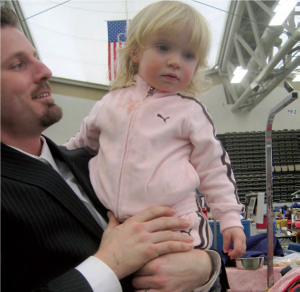


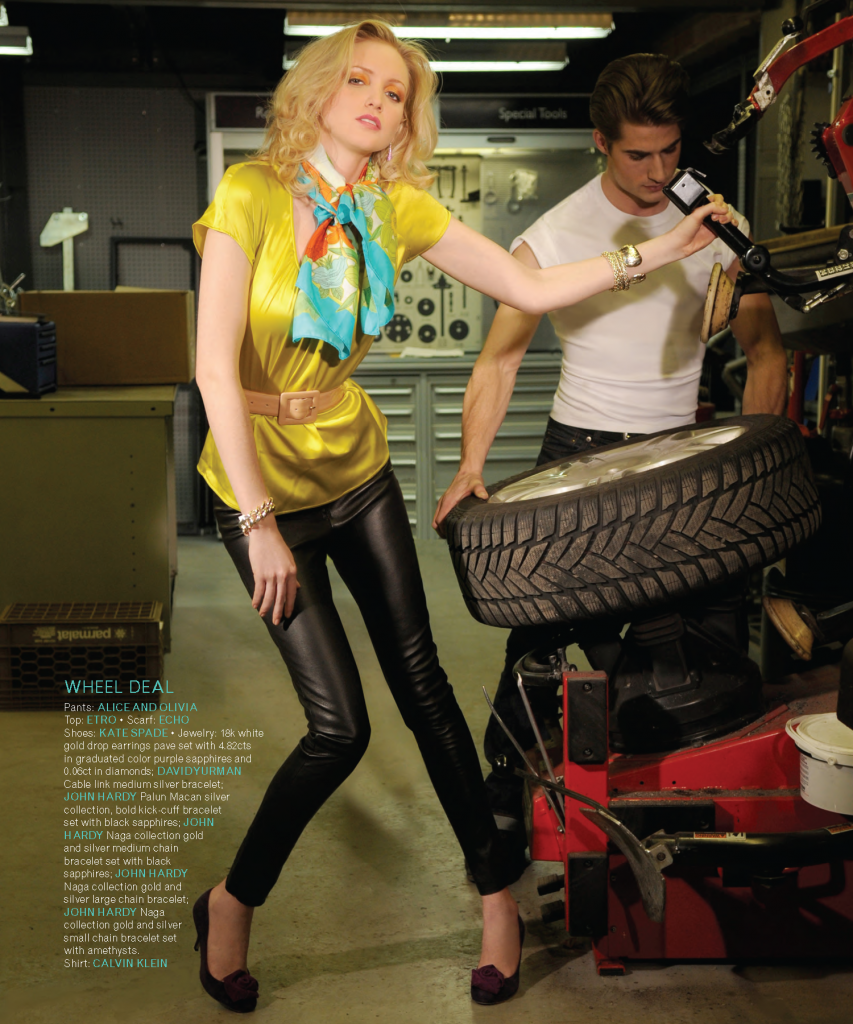

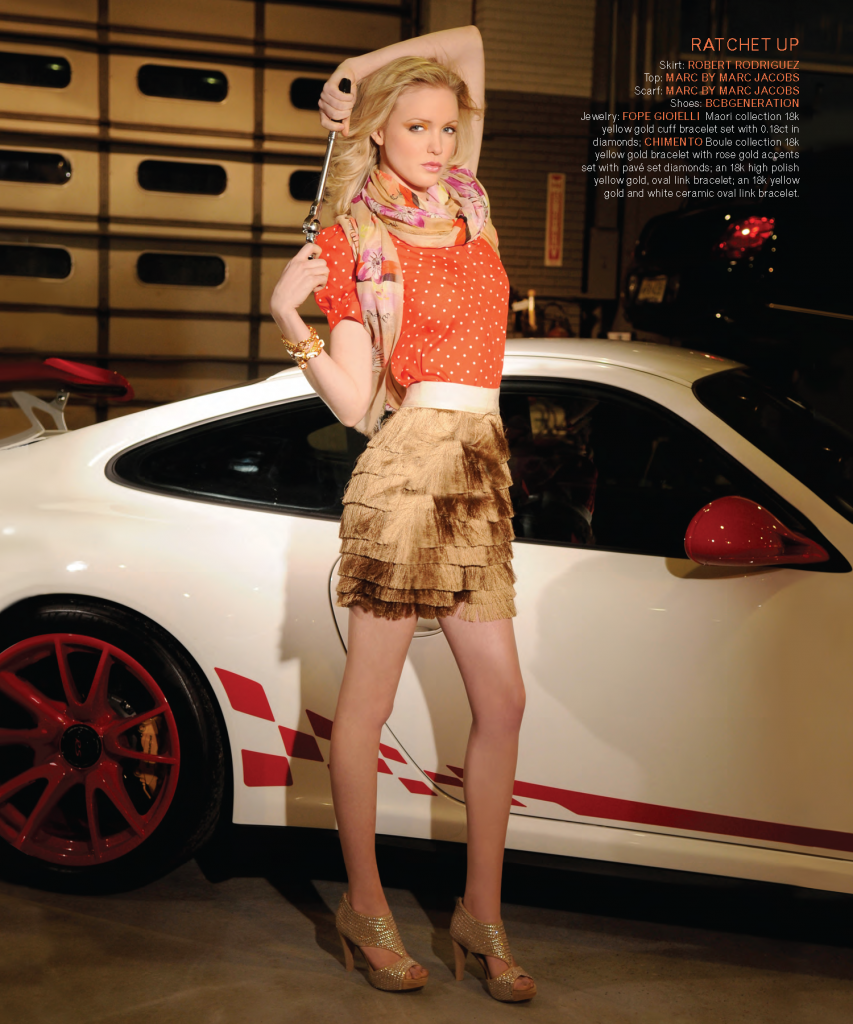
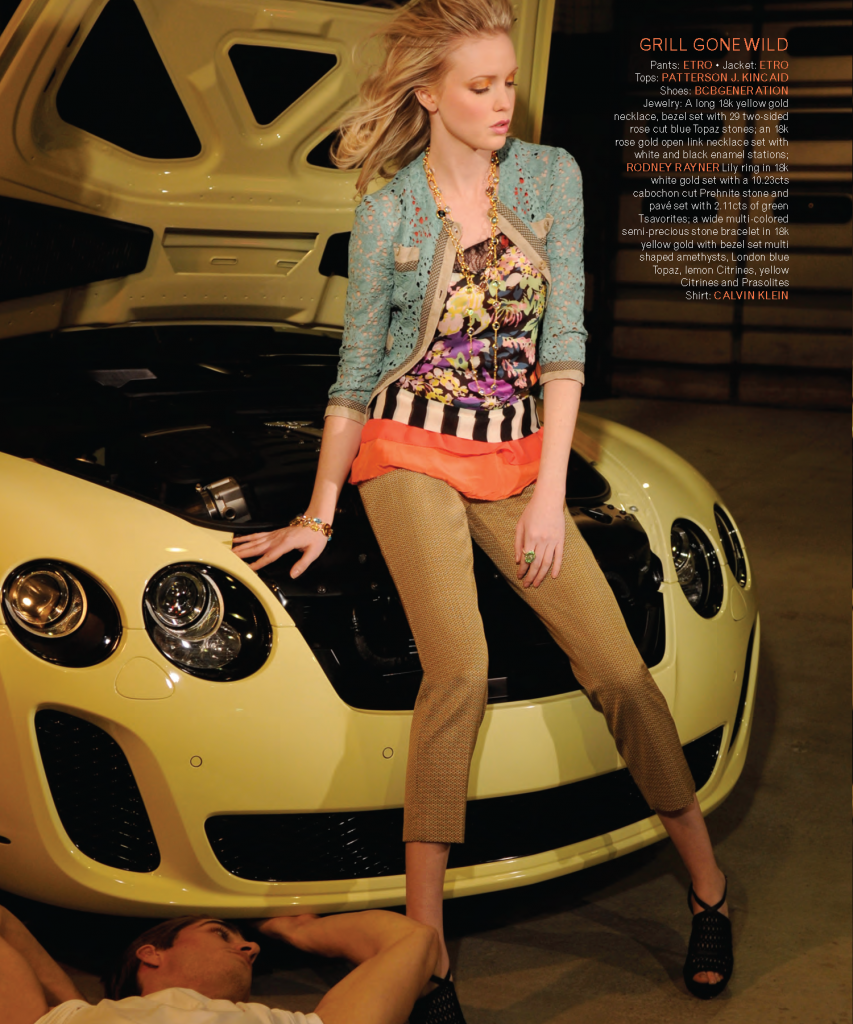
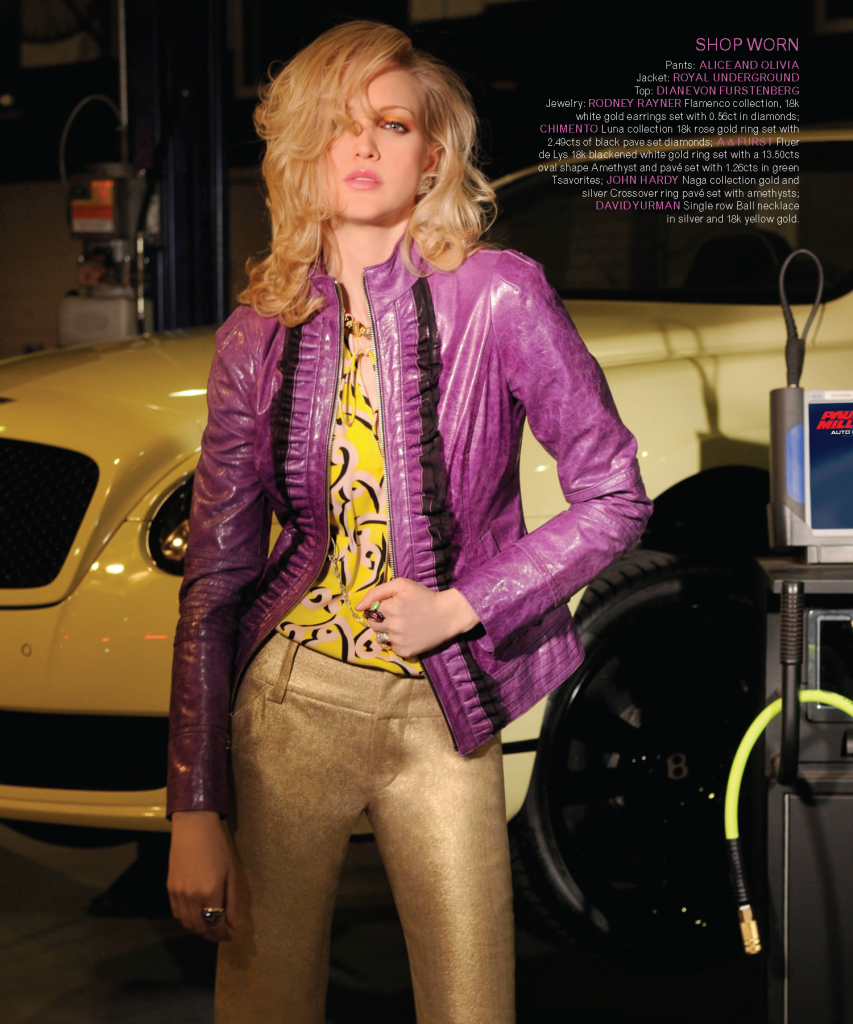

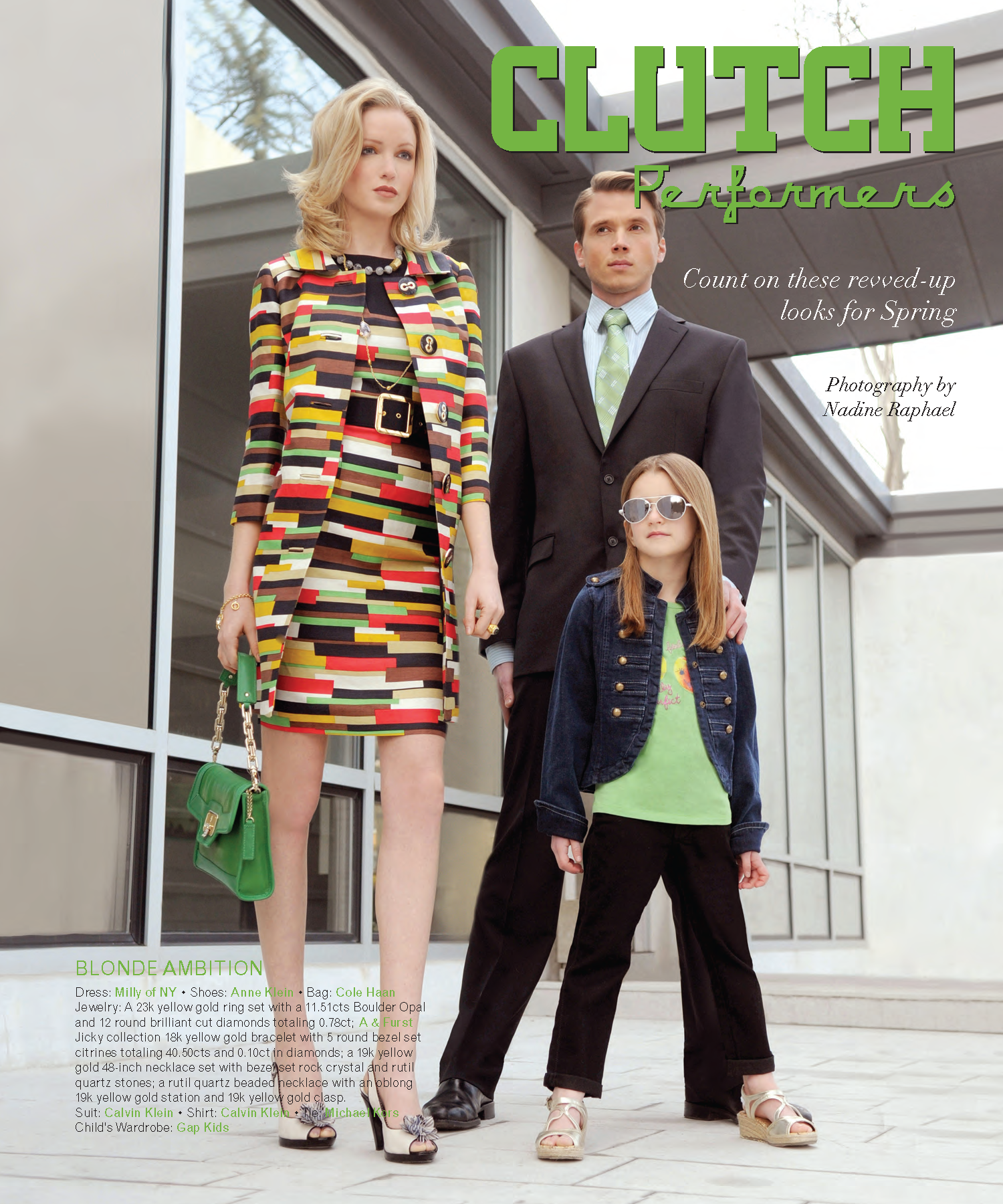
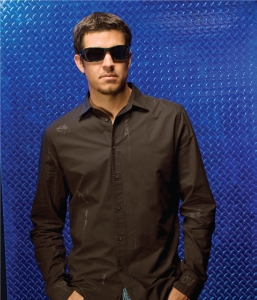 yourself. But let’s be honest— New Jersey is hardly a breeding ground for stock-car racing talent. Well, just don’t tell that to the folks in Ocean County. Every weekend they root for one of their own, MARTIN TRUEX JR., to take the checkered flag against the likes of living legends Jimmie Johnson, Jeff Gordon and another “junior”—Dale Earnhardt. How does a world-class racer go from the dirt tracks of South Jersey to the legendary ovals and super speedways of NASCAR? Turns out, it’s all in the family.
yourself. But let’s be honest— New Jersey is hardly a breeding ground for stock-car racing talent. Well, just don’t tell that to the folks in Ocean County. Every weekend they root for one of their own, MARTIN TRUEX JR., to take the checkered flag against the likes of living legends Jimmie Johnson, Jeff Gordon and another “junior”—Dale Earnhardt. How does a world-class racer go from the dirt tracks of South Jersey to the legendary ovals and super speedways of NASCAR? Turns out, it’s all in the family.

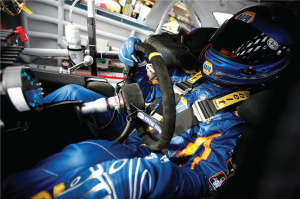 EDGE: The main sponsor of your car is NAPA. Do you have much interaction with them?
EDGE: The main sponsor of your car is NAPA. Do you have much interaction with them?

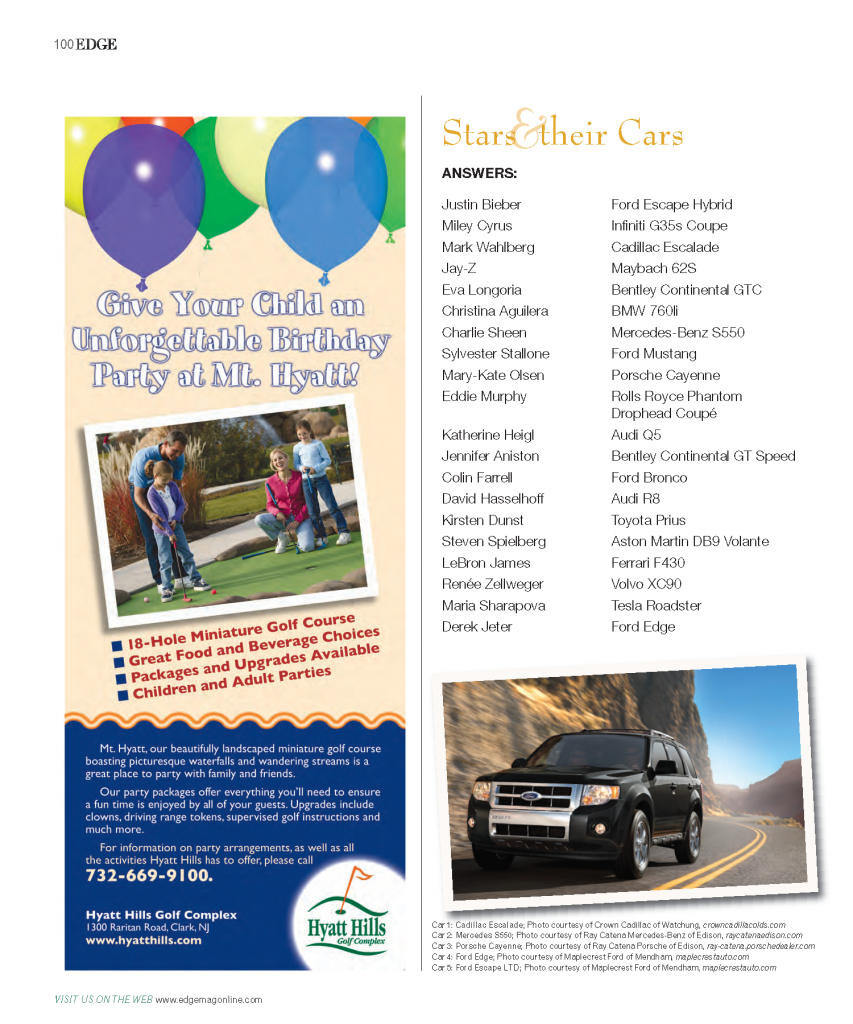
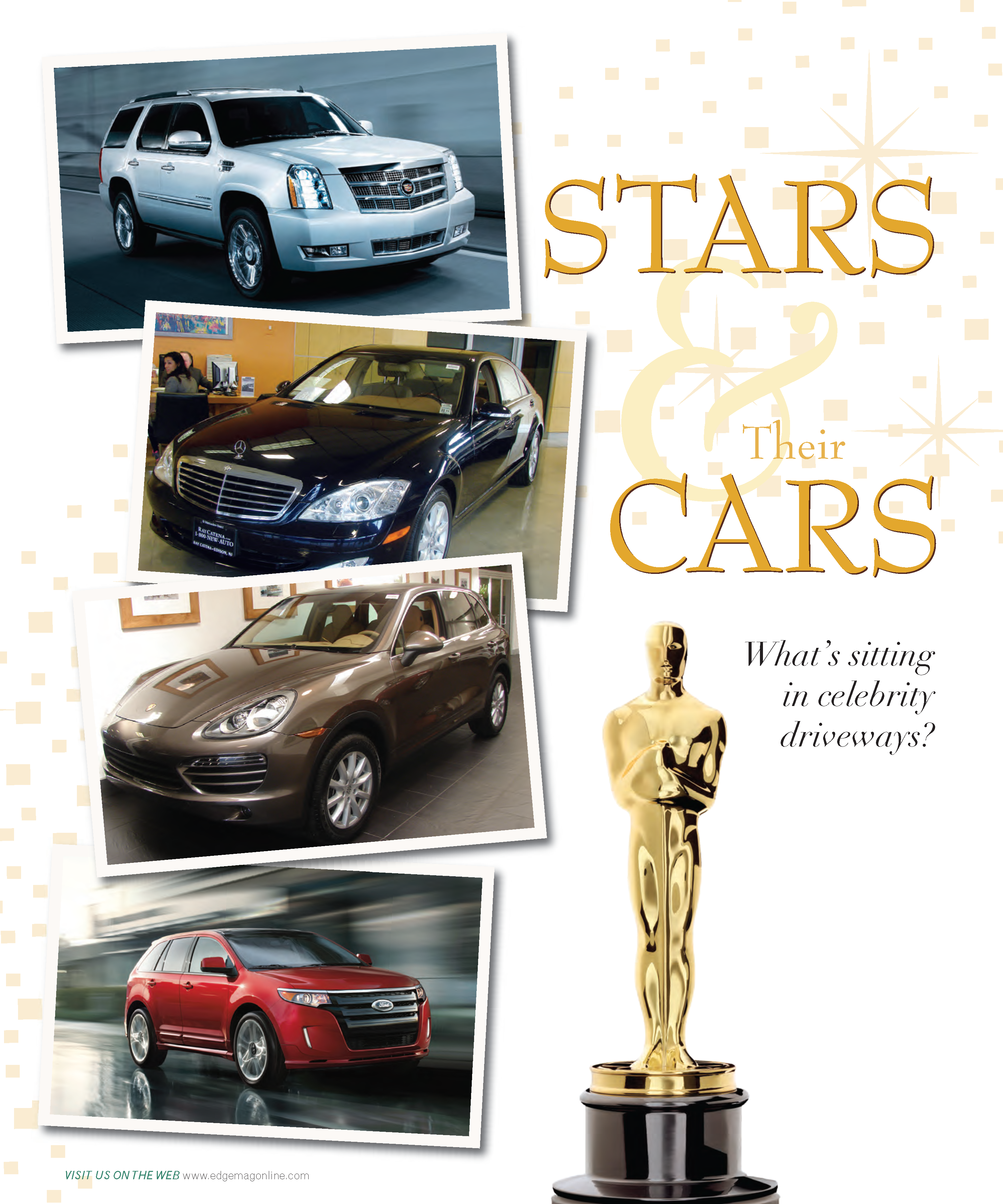
 our child into a name-brand college. In doing so, however, we are committing a heresy of emphasis; we have become so obsessed with the outcome that we have overlooked the whole point of the process. As a Certified Educational Planner with many years in the trenches of the “admissions game” (as one colleague playfully refers to it), I have accumulated an abundance of two things: anecdotes and raw data. The data speaks for itself; in the end, numbers are numbers. But the anecdotes—the “data” lived out through the hearts, hands, and hormones of respiring teenaged beings—is why I cannot imagine doing anything else with my life. It is this passion that is incendiary with my students; it is the invisible permission slip for each of them to permit themselves to dream of a life and future that is so meaningful, so gratifying, so spectacularly promising, that they cannot help but begin to vision what it might be. Which is why nothing makes me cringe like hearing a parent say, “WE want to apply to…” My philosophy is this: Focus on the student’s process of growth and self-discovery in the college application process, and the ideal college match will be the beautiful consequence. Your child’s “reach” school may not even be on your radar when you begin. Thus your first and most important effort should be to identify the best possible destination—not just for those four wonderful years, but for the rest of his or her life. I may be uttering heresy to those Type A’s among us (myself included) who cleave to the Machiavellian means-to-an-end mentality of Why do anything if it doesn’t get you to the next level in life? But the experts back me up. Steve Antonoff, of Antonoff and Associates in Denver, Colorado, says this about people in my profession: “The treasure the consultant has is not the list, the treasure lies in figuring out who a young person is and helping them discover what colleges will be the best fit for them.” What Antonoff is gesturing at is that a great consultant—or a great guidance counselor, or a wise mentor—will do whatever it takes to: 1) cut through the teen peer-pressure culture that oppressively enforces conformity, 2) focus on students for who they are, and 3) mirror back to them the unique gifts with which they have been blessed. In my own practice, I encourage each young person not to put his or her light under a basket, but to hold it aloft so as to illuminate the room, the school, the community and, I daresay, the globe. Only then does a true picture begin to emerge of the “best possible college.” Only then can a young person start building an application strategy to get into that school. In that spirit, consider the experiences and outcomes of the following four students…
our child into a name-brand college. In doing so, however, we are committing a heresy of emphasis; we have become so obsessed with the outcome that we have overlooked the whole point of the process. As a Certified Educational Planner with many years in the trenches of the “admissions game” (as one colleague playfully refers to it), I have accumulated an abundance of two things: anecdotes and raw data. The data speaks for itself; in the end, numbers are numbers. But the anecdotes—the “data” lived out through the hearts, hands, and hormones of respiring teenaged beings—is why I cannot imagine doing anything else with my life. It is this passion that is incendiary with my students; it is the invisible permission slip for each of them to permit themselves to dream of a life and future that is so meaningful, so gratifying, so spectacularly promising, that they cannot help but begin to vision what it might be. Which is why nothing makes me cringe like hearing a parent say, “WE want to apply to…” My philosophy is this: Focus on the student’s process of growth and self-discovery in the college application process, and the ideal college match will be the beautiful consequence. Your child’s “reach” school may not even be on your radar when you begin. Thus your first and most important effort should be to identify the best possible destination—not just for those four wonderful years, but for the rest of his or her life. I may be uttering heresy to those Type A’s among us (myself included) who cleave to the Machiavellian means-to-an-end mentality of Why do anything if it doesn’t get you to the next level in life? But the experts back me up. Steve Antonoff, of Antonoff and Associates in Denver, Colorado, says this about people in my profession: “The treasure the consultant has is not the list, the treasure lies in figuring out who a young person is and helping them discover what colleges will be the best fit for them.” What Antonoff is gesturing at is that a great consultant—or a great guidance counselor, or a wise mentor—will do whatever it takes to: 1) cut through the teen peer-pressure culture that oppressively enforces conformity, 2) focus on students for who they are, and 3) mirror back to them the unique gifts with which they have been blessed. In my own practice, I encourage each young person not to put his or her light under a basket, but to hold it aloft so as to illuminate the room, the school, the community and, I daresay, the globe. Only then does a true picture begin to emerge of the “best possible college.” Only then can a young person start building an application strategy to get into that school. In that spirit, consider the experiences and outcomes of the following four students…




 devices and e-readers (by this time next year there may be close to 100 out there!) seemed tailor-made for the technological needs and aspirations of schools at every level. Teachers, students and educational researchers all nod in agreement that we have come to at an important place in the evolution of learning. Things seem to be changing at light speed. The same pulse-quickening technology that drives lunchroom chatter is finding its way into classrooms all over the state in the form of SMART Boards, iPads and other devices that connect kids to information in attention grabbing ways. It’s an exciting time to be a student. For teachers, it’s a time of transition. They must evolve with the technology. Fortunately, the traditional forms of delivering information, despite losing ground, are not leaving the scene.
devices and e-readers (by this time next year there may be close to 100 out there!) seemed tailor-made for the technological needs and aspirations of schools at every level. Teachers, students and educational researchers all nod in agreement that we have come to at an important place in the evolution of learning. Things seem to be changing at light speed. The same pulse-quickening technology that drives lunchroom chatter is finding its way into classrooms all over the state in the form of SMART Boards, iPads and other devices that connect kids to information in attention grabbing ways. It’s an exciting time to be a student. For teachers, it’s a time of transition. They must evolve with the technology. Fortunately, the traditional forms of delivering information, despite losing ground, are not leaving the scene. Educational Advancement at Far Hills Country Day School, predicts that, 10 years from now, no one will be questioning the role of technology in schools. Everyone will have it and everyone will use it. “No longer will we be asking, ‘Should we use technology in this lesson?’ Technology will be portable and accessible all the time, everywhere—and a given tool for all learning.” When Donna Toryak of Mount Saint Mary Academy looks into her crystal ball, she predicts that paper, pencils and textbooks will be passé, and will no longer be a staple of the traditional classroom. “Online and virtual classrooms may replace what we now see as students sitting in rows at desks, listening to a lecture or annotating the day’s lessons. Technology is a very thrilling theme for the future.” The future has arrived at a growing number of New Jersey schools, and in some cases it’s in the hands of four-year olds. The Rumson Country Day School built a Passport to Adventure afternoon enrichment program around 10 recently purchased iPads. “Our pre-school iPad program enables students to learn through interaction with technology,” explains Laura Small, a teacher and administrator at RCDS. “They practice and master letter recognition, handwriting and math concepts technologically as well as traditionally.
Educational Advancement at Far Hills Country Day School, predicts that, 10 years from now, no one will be questioning the role of technology in schools. Everyone will have it and everyone will use it. “No longer will we be asking, ‘Should we use technology in this lesson?’ Technology will be portable and accessible all the time, everywhere—and a given tool for all learning.” When Donna Toryak of Mount Saint Mary Academy looks into her crystal ball, she predicts that paper, pencils and textbooks will be passé, and will no longer be a staple of the traditional classroom. “Online and virtual classrooms may replace what we now see as students sitting in rows at desks, listening to a lecture or annotating the day’s lessons. Technology is a very thrilling theme for the future.” The future has arrived at a growing number of New Jersey schools, and in some cases it’s in the hands of four-year olds. The Rumson Country Day School built a Passport to Adventure afternoon enrichment program around 10 recently purchased iPads. “Our pre-school iPad program enables students to learn through interaction with technology,” explains Laura Small, a teacher and administrator at RCDS. “They practice and master letter recognition, handwriting and math concepts technologically as well as traditionally.
 The power of television in our society has been made painfully clear by the current Reality TV craze. With careful editing and decent ratings, it seems any half-wit can become a major media star. Yet for all of the bad things this genre says about us as a culture, it can also do a lot of good. Exhibit A is IRINA SHABAYEVA, an outrageous young talent who rose above the competition to win Project Runway. For all its contrivances, the program transformed an industry unknown into New York’s newest designing woman—a career-launch that might never have happened but for the magic of basic cable. EDGE Style Editor Dan Brickley has been there and done that. The former host of TLC’s A Makeover Story is now a regular in US Weekly and runs a successful pop-culture web site. Dan caught up with Irina while she was putting the finishing touches on her new Fire & Ice collection (see pages 55-62), due to debut at Fashion Week in February. As he discovered, the first thing you need to know about Irina is that she was born in Georgia…and raised in Brooklyn.
The power of television in our society has been made painfully clear by the current Reality TV craze. With careful editing and decent ratings, it seems any half-wit can become a major media star. Yet for all of the bad things this genre says about us as a culture, it can also do a lot of good. Exhibit A is IRINA SHABAYEVA, an outrageous young talent who rose above the competition to win Project Runway. For all its contrivances, the program transformed an industry unknown into New York’s newest designing woman—a career-launch that might never have happened but for the magic of basic cable. EDGE Style Editor Dan Brickley has been there and done that. The former host of TLC’s A Makeover Story is now a regular in US Weekly and runs a successful pop-culture web site. Dan caught up with Irina while she was putting the finishing touches on her new Fire & Ice collection (see pages 55-62), due to debut at Fashion Week in February. As he discovered, the first thing you need to know about Irina is that she was born in Georgia…and raised in Brooklyn.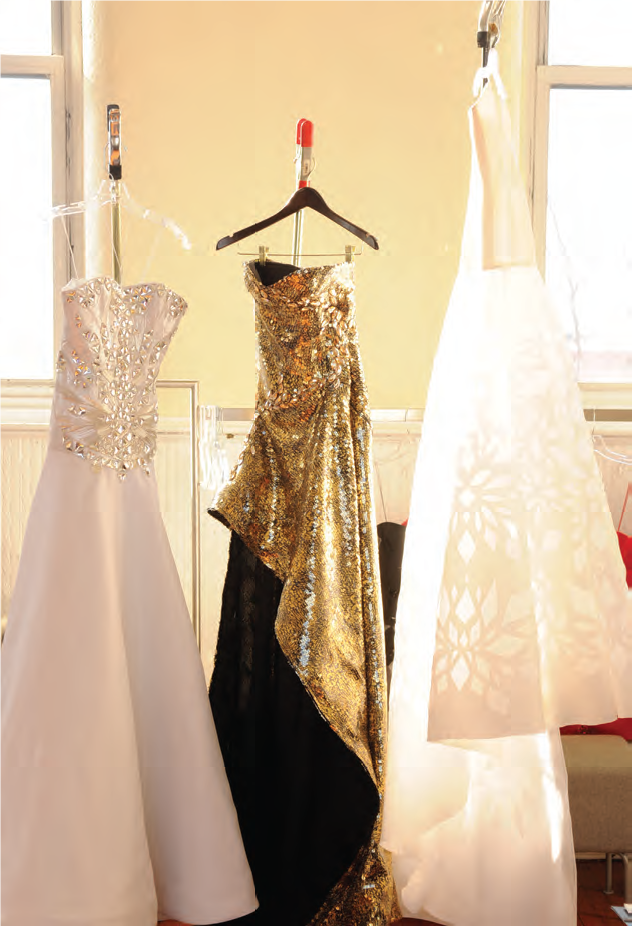

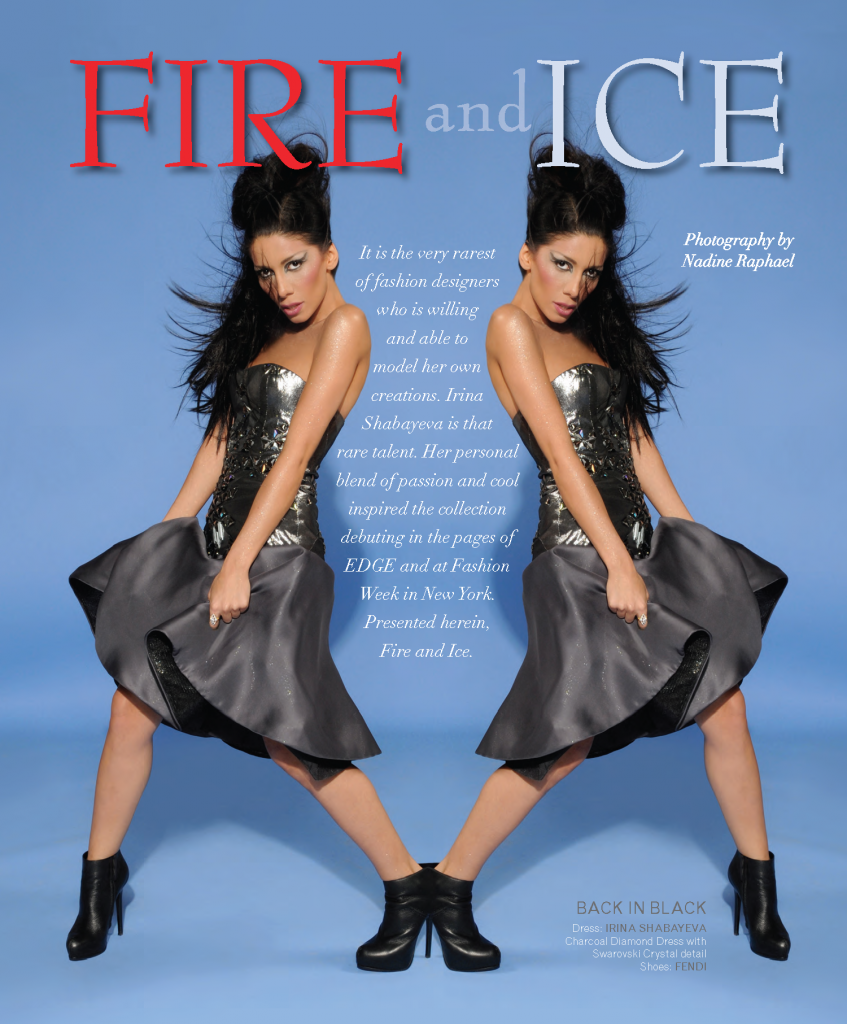


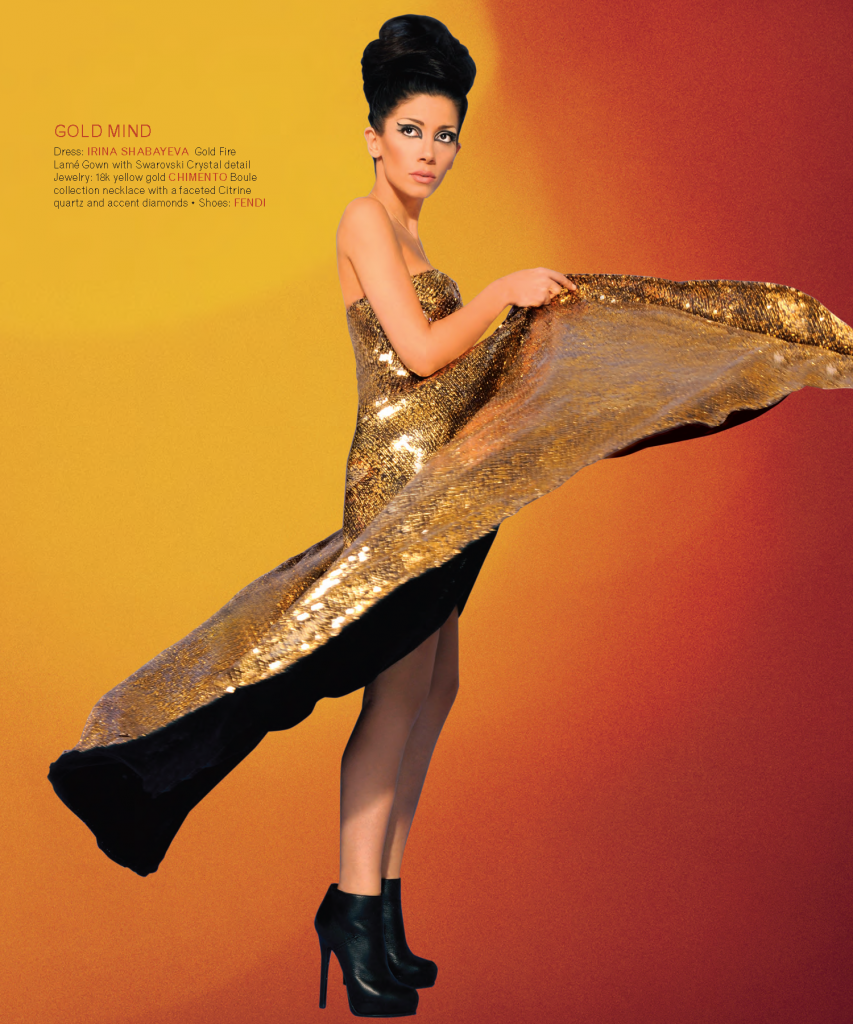
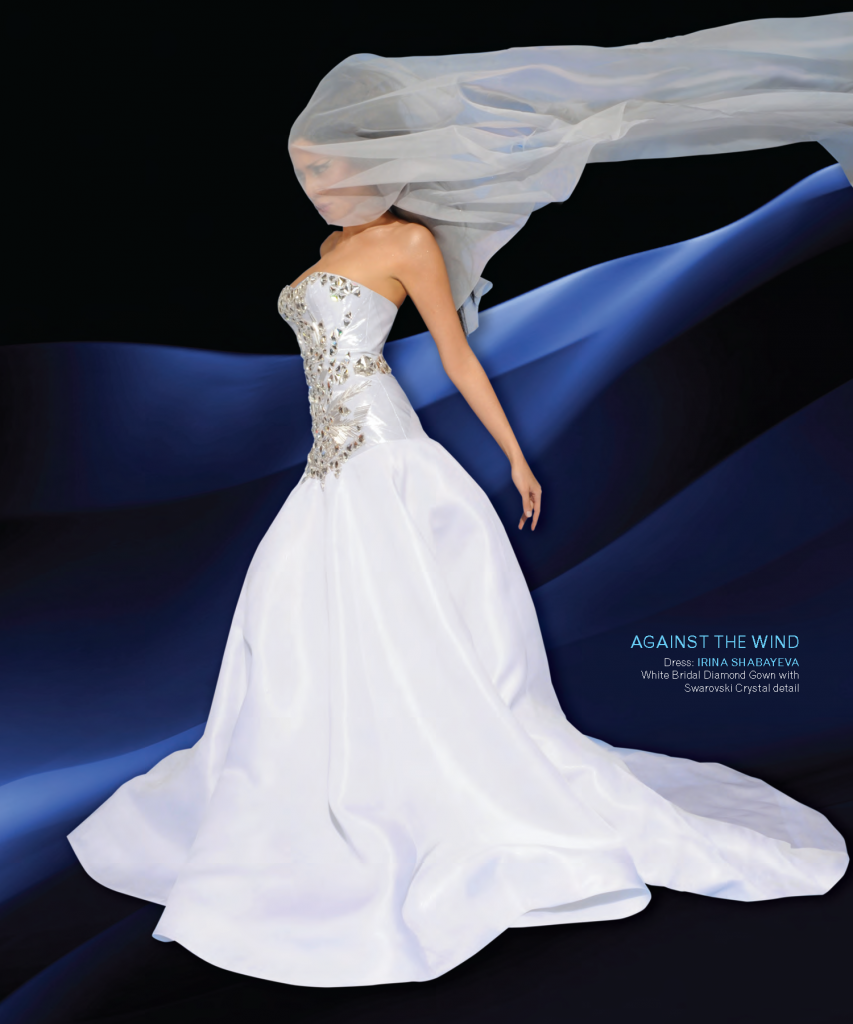
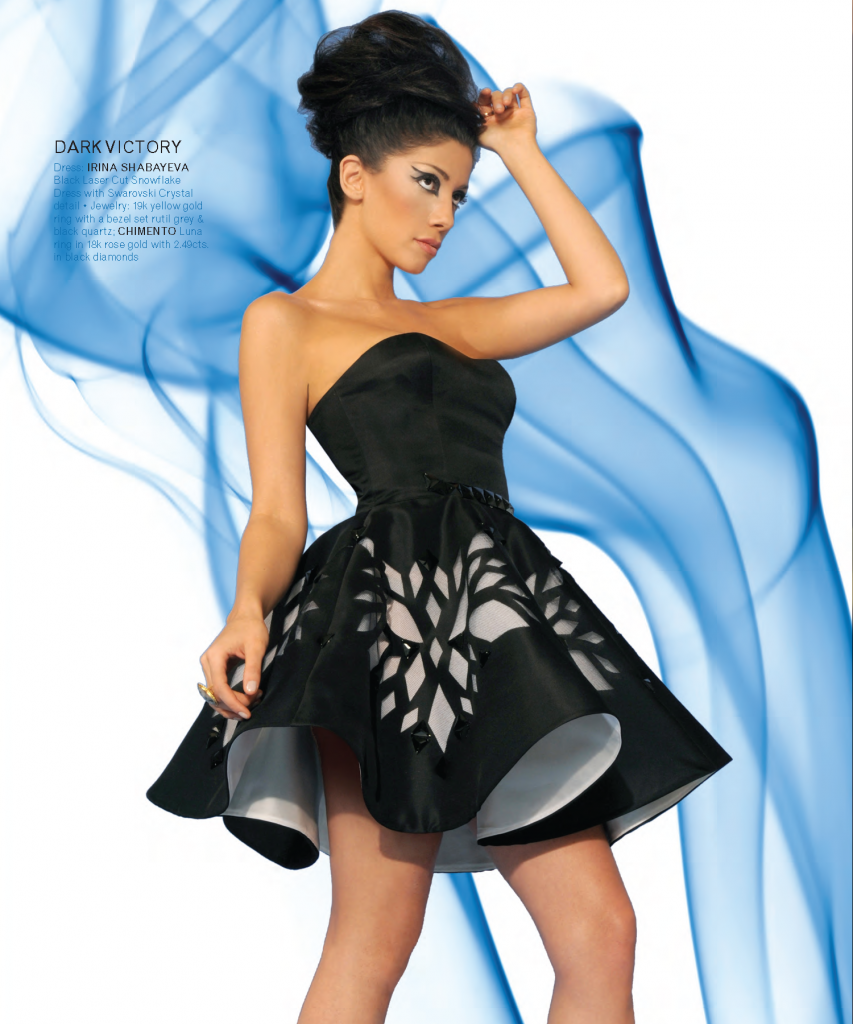




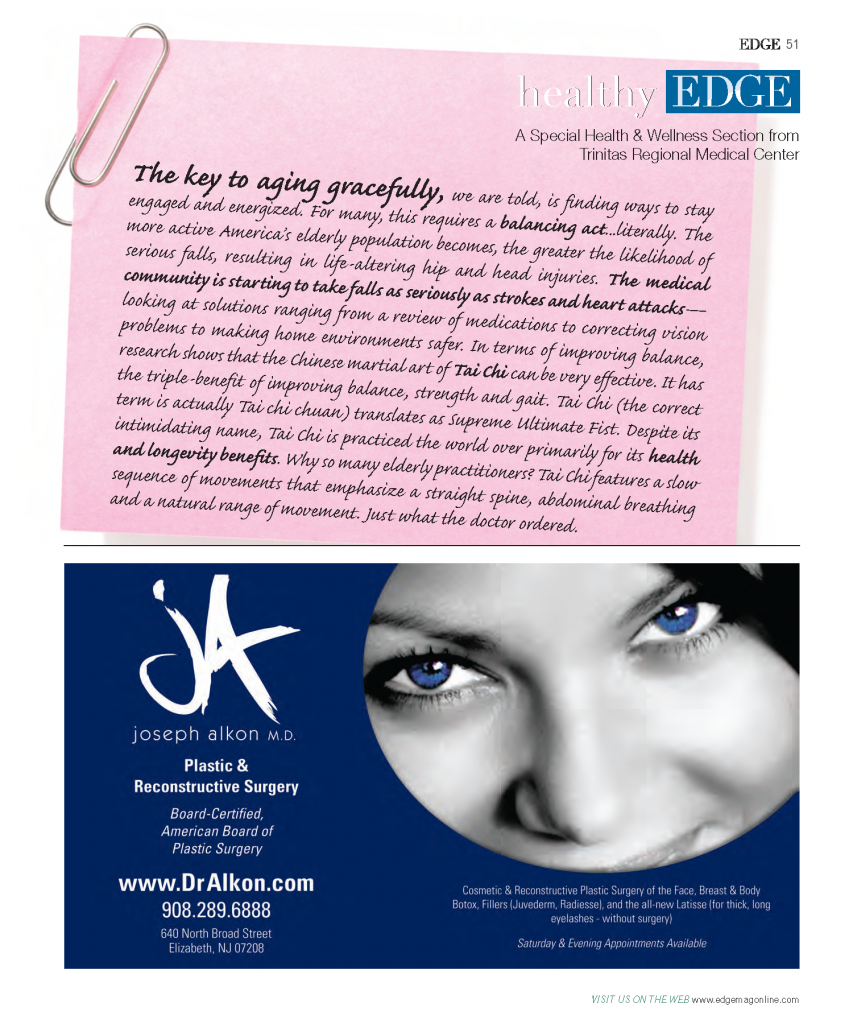


 surgeon, Dr. Cuadra is a specialist who treats diseases of the major blood vessels. A member of the Cardiovascular Care Group (with offices at Trinitas and in Westfield, Springfield and Belleville), he treats problems with the carotid arteries in the neck, as well as the veins and arteries in the abdomen, arms and lower extremities. One of Dr. Cuadra’s specialties is called a carotid endarterectomy. In lay terms, this is a surgical procedure that addresses blockages in the artery feeding the brain. Plaque can build up and potentially cause a stroke. The surgery literally “shells out,” or removes, the plaque through a small neck incision. Although the condition is extremely serious, the surgical prognosis is excellent and recovery time is relatively short. Typically, it involves only an overnight hospital stay. Within the past decade, there have been other advances in the development of less invasive treatments for vascular system disorders. Most of these involve the use of stents, which are applied through a catheter inserted through the groin area. The less invasive nature of this procedure certainly makes it more attractive to patients. Vascular surgeons routinely perform angioplasty to repair arteries that are blocked or narrowed. There has been much recent research and discussion about the relative efficacy of stents compared to surgery. The much-publicized CREST Trial has indicated that stents have no statistical advantage over surgery and, in certain cases, might even run a higher risk of subsequent stroke. However, Dr. Cuadra is uniquely qualified to perform either angioplasty or surgery. He has found that some patients have better results with angioplasty and stents, while others benefit more from surgery. Another problem that can be addressed by inserting a stent is an aneurysm. In such a case, an artery develops a bulge (widening) rather than a blockage. Over time, this can cause a weakening in the arterial wall. A vascular surgeon will perform a procedure to insert a specialized stent that allows blood to pass through it removing the pressure on the arterial wall (the aneurysm) thereby reducing the risk of rupture. At present, dialysis patients constitute approximately 50% of Dr. Cuadra’s group practice. In cases of kidney failure— which requires hemodialysis to remove toxic waste and excess fluid from the bloodstream—surgery is done to establish the necessary connection between an artery and a vein thereby allowing for dialysis to be performed. Of the remaining 50%, different people land in his office in a number of different ways. Many patients come via their PCP referral already suffering from obesity and/or diabetes; their doctor may have found an abnormality through physical examination or through an ultrasound, or some other procedure such as a CT scan. Others come because of physical symptoms such as loss of circulation to the legs causing pain, ulcerations, and even gangrene in the extremity. Although Dr. Cuadra says he enjoys working with patients to prevent the onset of vascular disease, he embraces the myriad challenges he faces every day. Being a surgeon suits him, he says. “I like using my hands to solve relatively serious patient problems. Surgery is more rewarding to me than some other specialties. I can see a problem, diagnose it and fix it in a relatively short time period.” EDGE
surgeon, Dr. Cuadra is a specialist who treats diseases of the major blood vessels. A member of the Cardiovascular Care Group (with offices at Trinitas and in Westfield, Springfield and Belleville), he treats problems with the carotid arteries in the neck, as well as the veins and arteries in the abdomen, arms and lower extremities. One of Dr. Cuadra’s specialties is called a carotid endarterectomy. In lay terms, this is a surgical procedure that addresses blockages in the artery feeding the brain. Plaque can build up and potentially cause a stroke. The surgery literally “shells out,” or removes, the plaque through a small neck incision. Although the condition is extremely serious, the surgical prognosis is excellent and recovery time is relatively short. Typically, it involves only an overnight hospital stay. Within the past decade, there have been other advances in the development of less invasive treatments for vascular system disorders. Most of these involve the use of stents, which are applied through a catheter inserted through the groin area. The less invasive nature of this procedure certainly makes it more attractive to patients. Vascular surgeons routinely perform angioplasty to repair arteries that are blocked or narrowed. There has been much recent research and discussion about the relative efficacy of stents compared to surgery. The much-publicized CREST Trial has indicated that stents have no statistical advantage over surgery and, in certain cases, might even run a higher risk of subsequent stroke. However, Dr. Cuadra is uniquely qualified to perform either angioplasty or surgery. He has found that some patients have better results with angioplasty and stents, while others benefit more from surgery. Another problem that can be addressed by inserting a stent is an aneurysm. In such a case, an artery develops a bulge (widening) rather than a blockage. Over time, this can cause a weakening in the arterial wall. A vascular surgeon will perform a procedure to insert a specialized stent that allows blood to pass through it removing the pressure on the arterial wall (the aneurysm) thereby reducing the risk of rupture. At present, dialysis patients constitute approximately 50% of Dr. Cuadra’s group practice. In cases of kidney failure— which requires hemodialysis to remove toxic waste and excess fluid from the bloodstream—surgery is done to establish the necessary connection between an artery and a vein thereby allowing for dialysis to be performed. Of the remaining 50%, different people land in his office in a number of different ways. Many patients come via their PCP referral already suffering from obesity and/or diabetes; their doctor may have found an abnormality through physical examination or through an ultrasound, or some other procedure such as a CT scan. Others come because of physical symptoms such as loss of circulation to the legs causing pain, ulcerations, and even gangrene in the extremity. Although Dr. Cuadra says he enjoys working with patients to prevent the onset of vascular disease, he embraces the myriad challenges he faces every day. Being a surgeon suits him, he says. “I like using my hands to solve relatively serious patient problems. Surgery is more rewarding to me than some other specialties. I can see a problem, diagnose it and fix it in a relatively short time period.” EDGE 

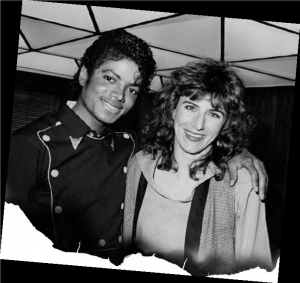





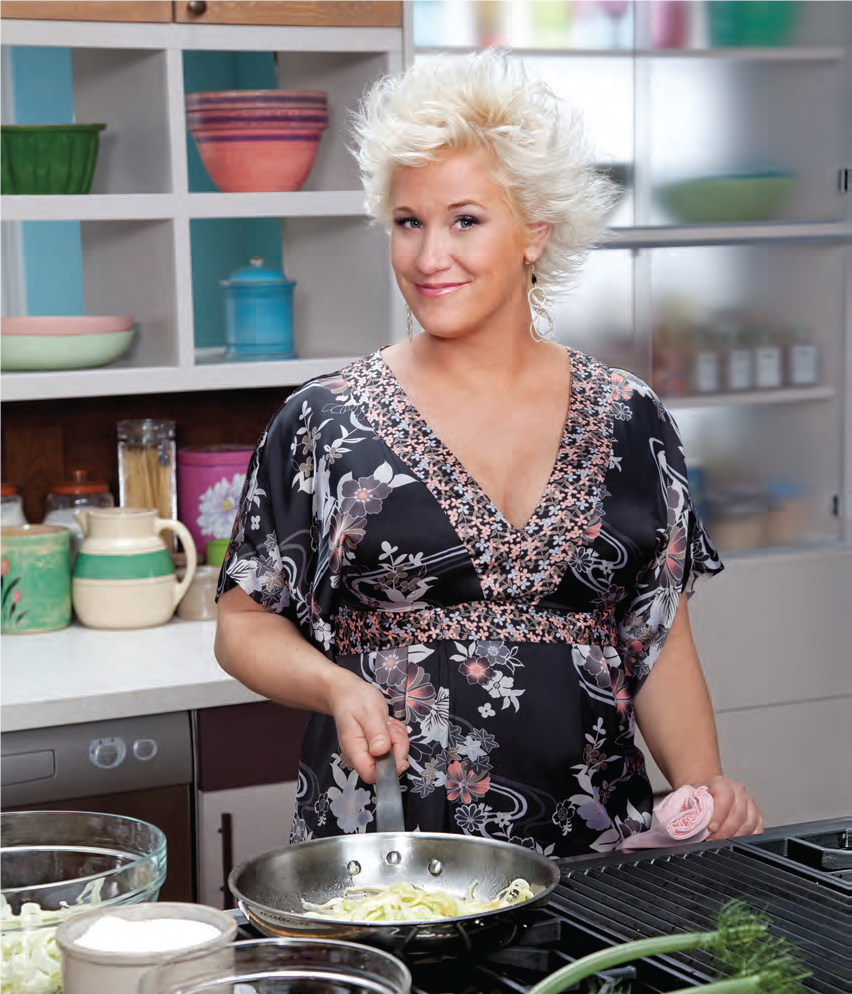
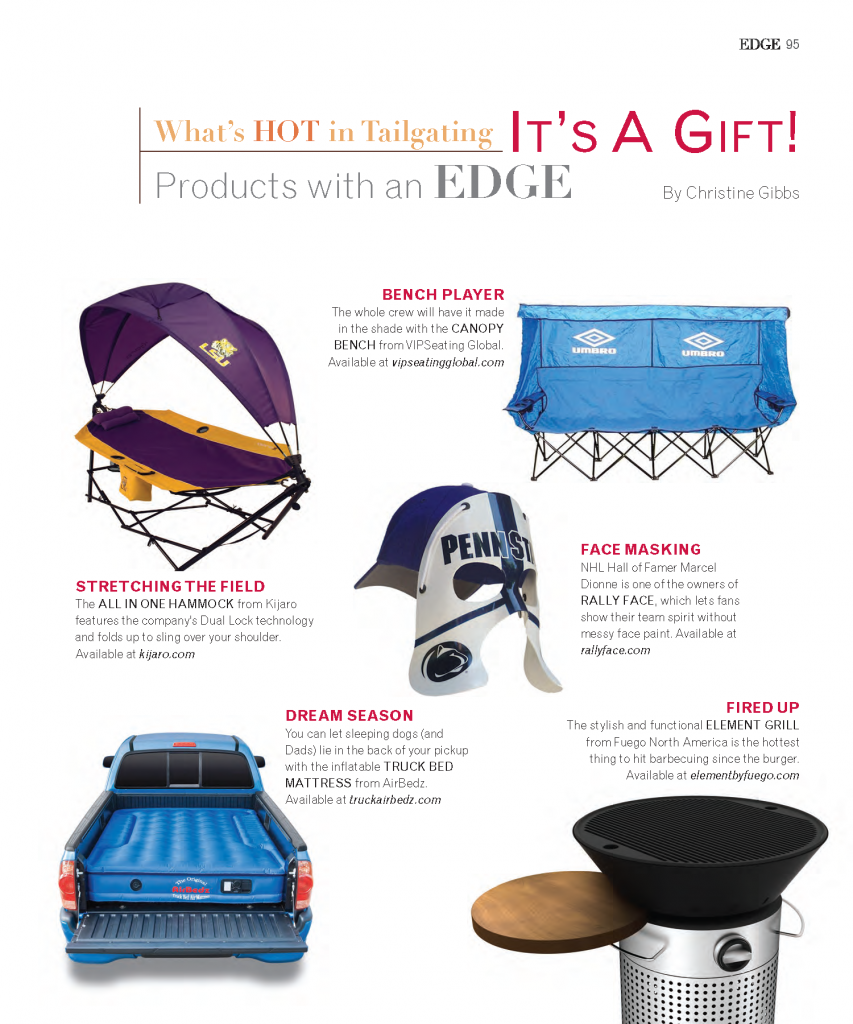
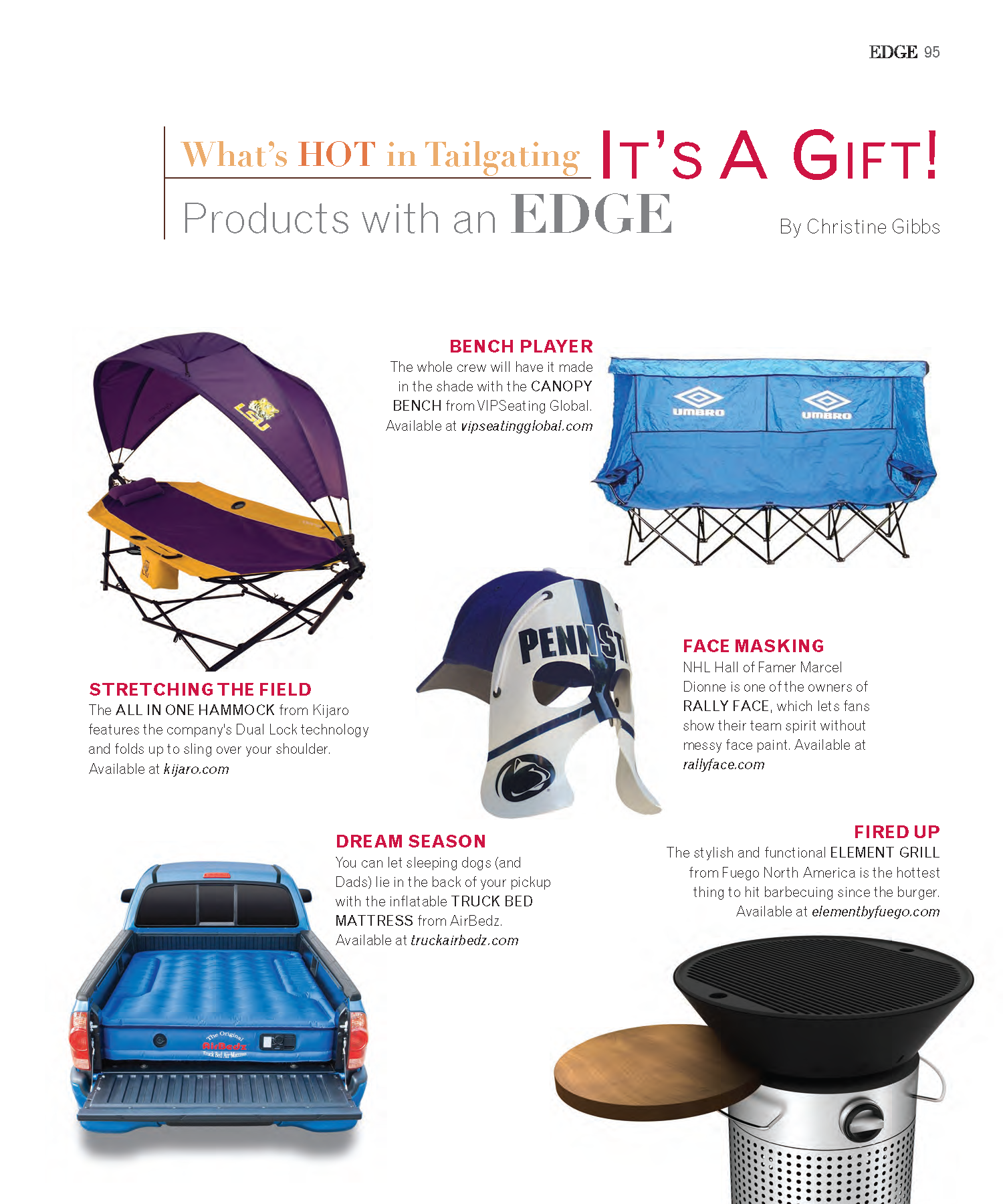

 er or Madonna.” No surname necessary. But no performer makes spicy mango chicken sausage or lamb-blue cheeserosemary sausage like Jabi and his crew. Jabi simply can’t stop creating. “We make at least one new sausage a week,” Jabi says as he packs up spicy Buffalo chicken sausages that deserve to be on Super Bowl watching menus everywhere, and ginger-chili bratwurst that takes the concept of fusion in new directions. My thoughts fly as I consider the more than 100 types of wursts, 20 kinds of kielbasa and tubs of prepared foods. Stuffed cabbage? Herring salad with beets? Time with Jabi is not for the faint of decision-making. Don’t leave without his spicy turkey sausages with chipotle and prunes. Cooked with cut-up root vegetables and diced tomatoes, they make for a dazzling Moroccan tagine, an exotic stew that can be served over rice, couscous or noodles. The myriad sausages also can be served simply in hot dog buns or hard rolls topped by a quick sauté of peppers and onions. A schmear of mustard is nice. But of the eight types I sampled, I have to say a Jabi creation needs no embellishment to be the star at your dinner.
er or Madonna.” No surname necessary. But no performer makes spicy mango chicken sausage or lamb-blue cheeserosemary sausage like Jabi and his crew. Jabi simply can’t stop creating. “We make at least one new sausage a week,” Jabi says as he packs up spicy Buffalo chicken sausages that deserve to be on Super Bowl watching menus everywhere, and ginger-chili bratwurst that takes the concept of fusion in new directions. My thoughts fly as I consider the more than 100 types of wursts, 20 kinds of kielbasa and tubs of prepared foods. Stuffed cabbage? Herring salad with beets? Time with Jabi is not for the faint of decision-making. Don’t leave without his spicy turkey sausages with chipotle and prunes. Cooked with cut-up root vegetables and diced tomatoes, they make for a dazzling Moroccan tagine, an exotic stew that can be served over rice, couscous or noodles. The myriad sausages also can be served simply in hot dog buns or hard rolls topped by a quick sauté of peppers and onions. A schmear of mustard is nice. But of the eight types I sampled, I have to say a Jabi creation needs no embellishment to be the star at your dinner. credit for introducing the masses to the delights of moussaka. Rifle through the freezers of local residents and you’ll find the Diamandases’ Greek meatballs waiting for that night when nothing else but a tangle of linguine topped with a few of those oregano-scented meat poufs will do. You also may find phyllo pies filled with spinach and cheese (aka spanokopita) and wedges of pastitsio, a lasagne-like casserole rich with eggy-creamy goodness. Don’t hesitate. Score some of these heat-and-eat entrees for tonight or for your next soirée. Then go to town with selections from The Greek Store’s olive bar and refrigerator case. Here all manner of dips in half-pound or full-pound sizes are sold. There are a good 30 different types of olives at the bar. There is no better way to launch a dinner party than by setting out a selection of Greek olives: Amfissa, the large and soft purplish-black variety from Delphi; Ionian, brine-cured green olives from the Peloponnesos; the traditional Kalamates, the fleshy favorite from Kalamata; Thassos, the oil-cured, dry type from the Aegean island of the same name. Partner these with one of the half-dozen varieties of feta, and lay all out with a spirited dip and pita chips. My personal favorite dip is the taramasalata, a decadent spread of fish roe and olive oil jazzed with nibs of shallots and herbs and a squeeze of lemon. Keep for yourself: a tub of tzatziki, the part-sauce, part-salad classic of sliced cucumbers rolling in thick Greek yogurt laced with mint and garlic. It’s restorative the morning after.
credit for introducing the masses to the delights of moussaka. Rifle through the freezers of local residents and you’ll find the Diamandases’ Greek meatballs waiting for that night when nothing else but a tangle of linguine topped with a few of those oregano-scented meat poufs will do. You also may find phyllo pies filled with spinach and cheese (aka spanokopita) and wedges of pastitsio, a lasagne-like casserole rich with eggy-creamy goodness. Don’t hesitate. Score some of these heat-and-eat entrees for tonight or for your next soirée. Then go to town with selections from The Greek Store’s olive bar and refrigerator case. Here all manner of dips in half-pound or full-pound sizes are sold. There are a good 30 different types of olives at the bar. There is no better way to launch a dinner party than by setting out a selection of Greek olives: Amfissa, the large and soft purplish-black variety from Delphi; Ionian, brine-cured green olives from the Peloponnesos; the traditional Kalamates, the fleshy favorite from Kalamata; Thassos, the oil-cured, dry type from the Aegean island of the same name. Partner these with one of the half-dozen varieties of feta, and lay all out with a spirited dip and pita chips. My personal favorite dip is the taramasalata, a decadent spread of fish roe and olive oil jazzed with nibs of shallots and herbs and a squeeze of lemon. Keep for yourself: a tub of tzatziki, the part-sauce, part-salad classic of sliced cucumbers rolling in thick Greek yogurt laced with mint and garlic. It’s restorative the morning after.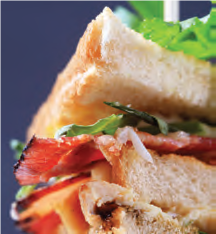 their kid’s First Communion or the folks’ 50th anniversary go for a personal bail-out. Sure, there’s a sizable sit-down space, and many do partake daily of the corner deli’s in-store hospitality. But what you need to know when you’re in a pinch for party-ready takeout is the name of Mr. J’s signature dish: Sloppy Joe. There are almost as many Sloppy Joes out there as there are fellows named Joe. But these piled-high sandwiches, here cut into quarters for easy at-home serving, are superior. Turkey and Swiss are layered with a snappy Russian dressing and extra-rich cole slaw on rye. There are combos renowned for their compatibility: chocolate and hazelnut, for instance, or smoked salmon and cream cheese. But turkey, Swiss, Russian and a phenomenal homemade cole slaw is sandwich nirvana. This winter, when you’re suffering from terminal envy of those vacationing on a sunny Caribbean island, lay out a spread of Mr. J’s Sloppy Joes with a side show of sausages doing a do-si-do with peppers. Home, sweet home.
their kid’s First Communion or the folks’ 50th anniversary go for a personal bail-out. Sure, there’s a sizable sit-down space, and many do partake daily of the corner deli’s in-store hospitality. But what you need to know when you’re in a pinch for party-ready takeout is the name of Mr. J’s signature dish: Sloppy Joe. There are almost as many Sloppy Joes out there as there are fellows named Joe. But these piled-high sandwiches, here cut into quarters for easy at-home serving, are superior. Turkey and Swiss are layered with a snappy Russian dressing and extra-rich cole slaw on rye. There are combos renowned for their compatibility: chocolate and hazelnut, for instance, or smoked salmon and cream cheese. But turkey, Swiss, Russian and a phenomenal homemade cole slaw is sandwich nirvana. This winter, when you’re suffering from terminal envy of those vacationing on a sunny Caribbean island, lay out a spread of Mr. J’s Sloppy Joes with a side show of sausages doing a do-si-do with peppers. Home, sweet home.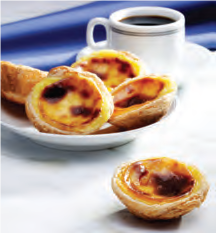


 seasonings don’t fight with the fishes; they complement. In the coconut milk-based soup tom-kha gai, chunks of chicken laze about the surprisingly light broth amid riffs of lemongrass and kaffir lime. In tom yum puk, a feisty little soup chunked with Asian vegetables and tofu, the lemongrass-lime component comes on stronger. As it should. We swooned over the Grand Palace Salad, a veritable party of grilled beef plied with onions and smacked with chilies and lime. There was no letdown with the nato-sad salad, a rather unusual toss of ginger-licked ground pork enlivened by onions and made elegant by the addition of cashews. I’m an easy mark for rice noodle dishes and my new favorite is Thailand Restaurant’s pad kee mna puk, a melange of those silky noodles, crispy fried tofu, egg, Thai basil and shards of vegetables. Sigh. I’ve got to learn to cook like this.
seasonings don’t fight with the fishes; they complement. In the coconut milk-based soup tom-kha gai, chunks of chicken laze about the surprisingly light broth amid riffs of lemongrass and kaffir lime. In tom yum puk, a feisty little soup chunked with Asian vegetables and tofu, the lemongrass-lime component comes on stronger. As it should. We swooned over the Grand Palace Salad, a veritable party of grilled beef plied with onions and smacked with chilies and lime. There was no letdown with the nato-sad salad, a rather unusual toss of ginger-licked ground pork enlivened by onions and made elegant by the addition of cashews. I’m an easy mark for rice noodle dishes and my new favorite is Thailand Restaurant’s pad kee mna puk, a melange of those silky noodles, crispy fried tofu, egg, Thai basil and shards of vegetables. Sigh. I’ve got to learn to cook like this.























